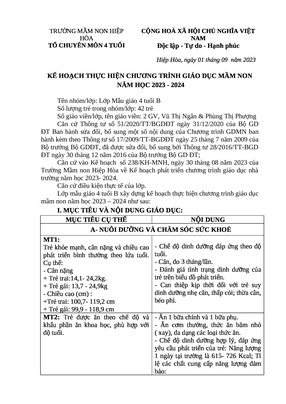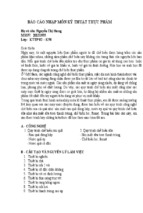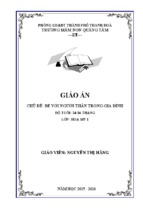TỔNG HỢP MESOPOROUS ZSM-5 ZEOLITES QUA ĐỀ
SILIC HÓA VÀ CÁC QUÁ TRÌNH TÁI TỔ HỢP CHÚNG
ABSTRACT
ZSM-5 zeolite crystals with secondary mesopores
were synthesized by alkaline desilication and
surfactant-induced re-assembly of dissolved species
(i.e., silicates, aluminosilicates and zeolite crystal
fragments) originating from the parent ZSM-5
crystals. The meso-zeolite products exhibit a dualmesopore structure in which the smaller mesopores
(ca. 3 nm) are attributed to surfactant-induced
micelle formation involving dissolved species, and
larger mesopores (ca. 10–30 nm) result from
desilication processes occurring under the alkaline
reaction conditions. The external surface area (i.e.,
the surface area due to mesopores, macropores and
the external particle surface) of the meso-zeolite
materials depends on the Si/Al ratio, the hydroxide
concentration and the presence of surfactant, and it
reaches values as high as 327 m2 g1 when a
surfactant is used. The crystallinity of the highest
surface-area meso-zeolite is well preserved,
maintaining values of ca. 83% (on the basis of
micropore volume) or ca. 77% (on the basis of Xray diffraction intensities) of the parent zeolite
structures.
Further
physicochemical
characterization by 27Al and 29Si magic-anglespinning solid-state NMR spectroscopy, scanning
and transmission electron microscopy, temperatureprogrammed
desorption measurements, and
inductively coupled plasma elementary analysis
support the hypothesis that re-assembly of
dissolved species of zeolite crystals occurred by
surfactant-induced micellization, resulting in the
high external surface area of the mesozeolite
materials.
1. Introduction
Zeolites
are
crystalline,
microporous
aluminosilicate materials with well-defined pore
structures and compositions, well-suited for ionexchange, catalysis, and separation processes [1–6].
The application of zeolites as catalysts, for
example, relies on their intrinsic acidity and on the
micropore structure, which allows size- and shapeselective uptake or release of small molecules.
However, the diffusion limitations imposed by
1
TÓM TẮT
Tinh thể zeolit ZSM-5 thứ cấp được tổng hợp bởi quá
trình đề silic hóa bằng kiềm và tạo ra bởi quá trình tái
tổ hợp các hạt (ví dụ, silicat, aluminosilicat và các
mảnh vỡ tinh thể zeolit) có nguồn gốc từ ZSM-5 tinh
thể ban đầu. Các sản phẩm meso-zeolite biểu diễn một
cấu trúc kép mesopore trong đó mesopores nhỏ hơn
(khoảng 3 nm) là do sự hình thành mixen hoạt động bề
mặt tạo bởi các tinh thể ban đầu bị phá vỡ, và
mesopores lớn hơn (khoảng 10-30 nm) là kết quả của
quá trình đề silic hóa xảy ra dưới các điều kiện phản
ứng kiềm. Diện tích bề mặt (ví dụ, diện tích bề mặt
domesopores, macropores và bề mặt hạt bên ngoài) của
vật liệu meso-zeolit phụ thuộc vào tỷ lệ Si / Al, nồng
độ hydroxide và sự có mặt các hạt trên bề mặt, và khi
sử dụng nó đạt giá trị cao là 327 m 2 /g khi bề mặt được
sử dụng. Các tinh thể có diện tích bề mặt meso-zeolite
cao nhất được bảo toàn, duy trì các giá trị của khoảng
83% (trên cơ sở khối lượng micropore) hoặc khoảng
77% (trên cơ sở nhiểu xạ tia X) của cấu trúc zeolit ban
đầu. Hơn nữa đặc tính hóa lý của 27Al và 29Si được xác
định bởi quang phổ NMR rắn, quét và truyền qua kính
hiển vi điện tử, các phép đo giải hấp phụ nhiệt độ xác
định và plasma cảm ứng của các nghiên cứu cơ bản
khẳng định giả thuyết rằng sự tái tổ lại các hạt bị phá
vỡ từ các tinh thể zeolit tạo ra micellization, dẫn đến
diện tích bề mặt bên ngoài cao của vật liệu mesozeolite.
1. Giới thiệu
Zeolit là dạng tinh thể, vật liệu silicat nhôm vi xốp với
những cấu trúc và thành phần lỗ trống xác định, rất phù
hợp cho trao đổi ion, xúc tác và các quy trình tách cấu
trúc [1-6]. Các ứng dụng của zeolit như chất xúc tác, ví
dụ, dựa vào nồng độ axit của zeolic và theo cấu trúc
micropore, cho phép hấp thu hoặc nhả hấp thu có chọn
lọc các phân tử có kích thước nhỏ. Tuy nhiên, các
phương pháp khuếch tán áp dụng tạo lỗ trống nhỏ
(thường ít hơn 1 nm) để vận chuyển các phân tử bên
ngoài đến các vị trí đang hoạt động bên trong zeolit
small pore apertures (usually less than 1 nm) for
transport of guest molecules to the active sites
inside zeolites have restricted the catalytic activity
of zeolites for various catalytic reactions [2–4,7]. In
order to overcome these diffusion limitations, much
effort has focused on decreasing the size or
thickness of zeolite crystals so that diffusion paths
are kept short and more active sites are exposed to
guest molecules for a given mass of zeolite
material. For instance, exfoliation of layered zeolite
structures [8,9], dual-templating approaches for
creation of mesoporous zeolite crystals [10],
addition of porogens or supramolecules with SDAs
[11–14] for introducing mesopores in zeolites, and
template-assisted synthesis of nano-sized zeolite
crystals [15–23] have been employed to create extra
surface area or to reduce the size/thickness of
zeolite catalysts. These methods have shown
promising results; however, the synthetic processes
involved are generally complex. Recently, more
direct, single-template syntheses of ZSM-5
composites with tunable mesoporosity have been
described, which provide control over texture and
Si/Al ratio in a uniform manner, while not requiring
additives [24,25].
Alternatively, desilication methods have recently
received significant attention because they are
relatively straight-forward to carry out (e.g.,
treatment of the zeolite with 0.2 M NaOH for 30
min at 65 C), and they can be applied to various
types of zeolites (e.g., MFI, BEA, FER and MOR)
[7,26–29]. In an alkaline medium, less reactive Al
sites help to maintain the zeolite framework,
whereas Si atoms are dissolved, rendering more
open
structures.
When
compared
with
dealumination, a well-known post-treatment
method for creating extra porosity in zeolite
structures, desilication provides more controllable
mesoporosity and preserves the Brønsted acidity
[30,31]. Generally, tailored mesoporosity by
desilication can be achieved by altering the Si/Al
ratio of the parent zeolites, the reaction temperature,
reaction time, and concentration of the base.
However, the process leads to greatly reduced
crystallinity (by ca. 30% determined by XRD and
nitrogen sorption measurements), and the observed
increase in external surface area is mainly
associated with mesopores larger than 10 nm [7,26–
29].
2
đang còn hạn chế cho các phản ứng xúc tác khác nhau
của zeolit [2-4,7]. Để khắc phục những hạn chế khuếch
tán, đã có nhiều nghiên cứu tập trung vào việc giảm
kích thước hay độ dày tinh thể zeolit để các đường dẫn
khuếch tán được lưu giữ ngắn và các vị trí hoạt động
nhiều hơn được tiếp xúc với các phân tử bên ngoài cho
một khối lượng nhất định của vật liệu zeolite. Ví dụ, sự
tách lớp của cấu trúc zeolit lớp [8,9], phương pháp tiếp
cận khuôn mẫu kép để tạo zeolit mao tinh thể [10], bổ
sung các lỗ xốp hoặc các phân tử nhỏ với SDAs[11-14]
sự có mặt mesopores trong zeolit, và sự tổng hợp mẫu
có mặt các tinh thể zeolit có kích thước nano [15-23]
đã được sử dụng để tạo ra diện tích bề mặt phụ hoặc để
giảm kích thước / độ dày chất xúc tác zeolite. Những
phương pháp này đã cho kết quả đầy hứa hẹn; tuy
nhiên, các quá trình tổng hợp nói chung là phức tạp.
Gần đây, nhiều tổng hợp trực tiếp đơn mẫu của ZSM-5
composit với mesoporosity có thể điều chỉnh đã được
mô tả, trong đó cung cấp kiểm soát cấu trúc và tỷ lệ Si /
Al một cách thống nhất, trong khi không cần chất phụ
gia [24,25].
Ngoài ra, phương pháp đề silic hóa gần đây đã nhận
được sự chú ý lớn bởi vì chúng khá để thực hiện (ví dụ,
zeolite được xử lý với 0,2 M NaOH trong 30 phút ở
65oC), và chúng có thể được áp dụng cho các loại zeolit
khác nhau (ví dụ, MFI, BEA, FER và MOR) [7,26-29].
Trong môi trường kiềm, các vị trí Al ít phản ứng giúp
duy trì khuôn khổ zeolite, trong khi các nguyên tử Si bị
phân tán, làm cho cấu trúc mở hơn. Khi so sánh với
dealumination, là một phương pháp sau khi xử lí được
biết đến để tạo thêm độ xốp trong cấu trúc zeolit, đề
silic hóa quy định kiểm soát hơn nữa mesoporosity và
duy trì nồng độ axit Bronsted [30,31]. Nói chung,
mesoporosity tạo ra bởi đề silic hóa có thể đạt được
bằng cách thay đổi tỷ lệ Si / Al của zeolit ban đầu,
nhiệt độ phản ứng, thời gian phản ứng, và nồng độ của
các chất cơ sở. Tuy nhiên, quá trình này dẫn đến việc
giảm đi rất nhiều tinh thể (bởi khoảng 30% xác định
bằng nhiễu xạ tia X và các phép đo nitơ hấp phụ), và sự
gia tăng quan sát trong diện tích bề mặt bên ngoài là
chủ yếu liên quan đến mesopores lớn hơn 10 nm [7,2629].
Another
approach
involves
simultaneous
dissolution and re-deposition of dissolved species
on the surface of the parent amorphous silica in the
presence of long-chain alkylammonium surfactants
(e.g., cetyltrimethylammonium bromide: CTAB)
[32– 35]. Under basic conditions, the dissolved
silicates assemble with surfactant molecules to form
micelles and reprecipitate onto the surface of the
parent spheres during the hydrothermal reaction to
transform amorphous silica into mesoporous silica.
These transformations of nonporous silica to porous
silica can be performed without changing the shape
of the parent materials in a reaction known as a
pseudomorphic transformation: a reaction in which
chemical components change through dissolution
and reprecipitation, while the shape of the solid
material is preserved [32]. Within certain
compositional ranges (i.e., 1 SiO2:0.1–0.18
CTAB:0.1–0.44 NaOH:50–750 H2O), mesopores
with 2-D hexagonal symmetry (p6mm) are usually
produced, which originate from the formation of
homogeneous micelles comprising surfactant
molecules and dissolved species [32–35].
Here, we introduce a method for preparing
mesoporous zeolite (meso-zeolite) materials by a
combination of desilication and reassembly
processes, adopted from the concept of
pseudomorphic transformations. Dissolved species
containing silicates, aluminosilicates, and fragments
of the ZSM-5 crystals can be re-deposited on the
parent zeolite structure by surfactant molecules
(here, CTAB) via micelle formation under
hydrothermal conditions (Fig. 1). Physicochemical
properties of the meso-zeolite materials prepared by
desili0cation or combined desilication/re-assembly
processes were characterized by solid-state 27Al
and 29Si magic-angle-spinning (MAS) NMR,
scanning and transmission electron microscopy
(SEM and TEM), nitrogen sorption measurements,
temperature-programmed ammonia desorption
(TPD), X-ray diffraction (XRD), and elemental
analysis
by
inductively
coupled
plasma
spectroscopy (ICP). The final products prepared
under specific alkaline conditions exhibited a dualmesopore size distribution (ca. 3 and 10–30 nm),
increased external surface areas (i.e., surface area
not associated with micropores; up to 327 m2 g1 )
and well-preserved crystallinity (ca. 83% of the
3
Một phương pháp khác liên quan đến việc phá vỡ và
đồng thời tái tổ hợp của các hạt bị phá vỡ trên bề mặt
của silica vô định hình ban đầu trong sự hiện diện của
bề mặt chuỗi dài alkylammonium (ví dụ,
cetyltrimethylammonium bromide: CTAB) [32-35].
Dưới những điều kiện cơ bản, các silicat bị giải thể tổ
hợp với các phân tử bề mặt để tạo thành các mixen và
tái lắng đọng lên bề mặt của các khu vực ban đầu trong
phản ứng thủy nhiệt để chuyển silicat vô định hình vào
silica mao. Những biến đổi silica xốp để silica xốp có
thể được thực hiện mà không thay đổi hình dạng của
vật liệu ban đầu trong một phản ứng được gọi là một
sự biến đổi pseudomorphic: một phản ứng mà trong đó
thành phần hóa học thay đổi thông qua giải thể và
reprecipitation,trong khi hình dạng của các vật liệu rắn
được bảo tồn [32]. Ở trong phạm vi chất nhất định (ví
dụ, 1 SiO2: 0,1-0,18 CTAB: 0,1-0,44NaOH: 50-750
H2O), mesopores với đối xứng lục giác 2-D (p6mm)
thường được sản xuất, nó có nguồn gốc từ sự hình
thành các mixen đồng nhất bao gồm các phân tử bề mặt
và các hạt bị phá vỡ [32-35].
Ở đây, chúng tôi giới thiệu một phương pháp điều chế
vật liệu zeolit mao (Meso-zeolite) bằng sự kết hợp của
các quá trình đề silic hóa và tái tổ hợp, được lấy từ các
khái niệm về biến đổi pseudomorphic. Hạt bị phá vỡ
chứa silicat, aluminosilicat, và các mảnh vỡ của tinh
thể ZSM-5 có thể được tái tổ hợp trên cấu trúc zeolite
ban đầu bởi các phân tử hoạt động bề mặt (ở đây, là
CTAB) qua hình thành mixen trong điều kiện thủy
nhiệt (Hình. 1). Đặc tính hóa lý của các vật liệu mesozeolite chuẩn bị bởi đề silic hóa hoặc kết hợp các quá
trình đề silic hóa / tái tổ hợp đã được đặc trưng bởi các
trạng thái rắn của 27Al và 29Si xác định bởi quang phổ
NMR (MAS), kính hiển vi điện tử quét và truyền (SEM
và TEM), các phép đo nitơ hấp phụ, các phép đo giải
hấp phụ nhiệt đội xác định (TPD), nhiễu xạ tia X
(XRD), và phân tích nguyên tố bằng quang phổ plasma
quy nạp cùng (ICP). Sản phẩm cuối cùng chuẩn bị
trong điều kiên kiềm cụ thể biểu diễn một phân bố kích
thước kép mesopore (khoảng 3 và 10-30 nm), tăng diện
tích bề mặt bên ngoài (ví dụ, diện tích bề mặt không kết
hợp với vi lỗ; lên đến 327 m2 /g) và bảo tồn tốt tinh thể
(khoảng 83% trong cơ cấu zeolite ban đầu trên cơ sở
khối lượng lỗ micropore tính toán từ các phép đo hấp
phụ nitơ, và khoảng 77% ước tính từ các phép đo nhiễu
xạ tia X). Các cấu trúc của sản phẩm cho thấy đề silic
hóa và tái tổ hợp xảy ra đồng thời để tạo ra một hệ
parent zeolite structure on the basis of micropore
pore volumes calculated from nitrogen sorption
measurements, and ca. 77% estimated from XRD
measurements). The textures of the products
suggest that desilication and re-assembly occurred
simultaneously to create a dual-pore system. Reassembly of the dissolved species by micellization
of a surfactant produced small mesopores (ca. 3
nm), while the desilication process generated larger
mesopores (10–30 nm) in the zeolite crystals.
2. Experimental section
2.1. Reagents
The following chemicals were used without further
purification. Tetrapropylammonium hydroxide
(TPAOH, 1.0 M in H2O), tetraethyl orthosilicate
(TEOS, 98%) and cetyltrimethylammonium
bromide (CTAB) were purchased from Aldrich,
aluminum isopropoxide from Alfa Aesar, sodium
hydroxide
from
Mallinckrodt
Chemicals,
ammonium nitrate from Fisher Scientific Company
and ethanol (200 proof) from Pharmco-Aaper.
Deionized water with a resistivity of 18.2 MX cm
was used for all reactions.
2.2. Synthesis of ZSM-5
Aluminum isopropoxide (0.074 g for Si/Al = 100,
0.148 g for Si/Al = 50 and 0.248 g for Si/Al = 30)
was dissolved in a mixture of water (74.4 g) and 1.0
M aqueous TPAOH (16.56 g), and then TEOS (7.6
g) was added to the mixture. Mixtures of the
following molar compositions (71.4 SiO2:32
TPAOH:9500 H2O:1.42 (for Si/Al = 100)/2.85 (for
Si/Al = 50)/4.76 (for Si/Al = 30) Al2O3) were
hydrolyzed with vigorous stirring for 24 h at room
temperature. The filtered solutions were transferred
into Teflon-lined autoclaves, and hydrothermal
reactions were performed for 2 days (Si/Al = 100),
4 days (Si/Al = 50), and 8 days (Si/Al = 30) at 100
C. The final products were washed with water and
centrifuged several times, then dried at 100 C
overnight. All samples were calcined to remove
structure directing agents (SDAs) under an oxygen
atmosphere with a heating rate of 1 C/min up to 550
C. They were maintained at 550 C for 6 h and then
cooled down to room temperature. The samples
with Si/Al = 100, 50, and 30 were denoted as ZSM5_100, ZSM-5_50, and ZSM-5_30, respectively.
thống lỗ trống kép. Tái tổ hợp của các hạt bị phá vỡ bởi
micellization của bề mặt sản xuất mesopores nhỏ
(khoảng 3 nm), trong khi quá trình đề silic hóa tạo
mesopores lớn hơn (10-30 nm) trong các tinh thể zeolit.
2. Phần thực nghiệm
2.1. Các chất phản ứng
Các hóa chất sau đây đã được sử dụng mà không cần
tinh chế thêm. Tetrapropylammonium hydroxide
(TPAOH, 1,0 M trong H2O), tetraethyl orthosilicate
(Teos, 98%) và cetyltrimethylammoniumbromide
(CTAB) được mua từ Aldrich, nhôm isopropoxide từ
Alfa Aesar, sodium hydroxide từ Hóa chất
Mallinckrodt, ammonium nitrate từ Công ty Fisher
Scientific và ethanol (200) từ Pharmco-Aaper. Nước
khử ion với điện trở suất 18,2 MX cm được sử dụng
cho tất cả các phản ứng.
2.2. Tổng hợp ZSM-5
Isopropoxide nhôm (0,074 g cho Si / Al = 100, 0,148 g
cho Si / Al = 50 và 0,248 g cho Si / Al = 30) được hòa
tan trong một hỗn hợp nước (74,4 g) và 1,0 M TPAOH
dịch nước (16,56 g), và sau đó Teos (7,6 g) được thêm
vào hỗn hợp. Hỗn hợp của các thành phần phân tử sau
đây (71,4 SiO2: 32 TPAOH: 9500 H2O: 1.42 (cho Si /
Al = 100) /2.85 (cho Si / Al = 50) /4.76 (cho Si / Al =
30) Al2O3) được thủy phân với khuấy mạnh trong 24
giờ ở nhiệt độ phòng. Sản phẩm được chuyển vào nồi
hấp lót Teflon, và các phản ứng thủy nhiệt được thực
hiện trong 2 ngày (Si / Al = 100), 4 ngày (Si / Al = 50),
và 8 ngày (Si / Al = 30) ở 100 oC. Sản phẩm cuối cùng
được rửa với nước và ly tâm nhiều lần, sau đó sấy khô
ở 100oC qua đêm. Tất cả các mẫu được nung để loại bỏ
cơ cấu chỉ đạo các đại lý (SDAs) theo một bầu không
khí oxy với một tốc độ làm nóng 1oC / phút lên đến
550oC. Nó duy trì ở 550oC trong 6h và sau đó làm lạnh
xuống nhiệt độ phòng. Các mẫu với tỉ lệ Si / Al = 100,
50, và 30 là ký hiệu là ZSM-5_100, ZSM-5_50, và
ZSM-5_30, tương ứng.
2.3. Tổng hợp các meso-zeolit
2.3. Synthesis of meso-zeolites
ZSM-5_100, 50, và 30 (0,176 g) mẫu được hòa tan
ZSM-5_100, 50, and 30 (0.176 g) samples were trong hỗn hợp của nước (20 g) và ethanol (10 g). Riêng
4
dispersed in mixtures of water (20 g) and ethanol
(10 g). Separately, CTAB (0.2 g) was dissolved in
an alkaline solution containing 0.052 g (n = 1),
0.078 g (n = 1.5), 0.104 g (n = 2), 0.156 g (n = 3),
or 0.312 g (n = 6) of NaOH and 20 g of water.
Alternatively, similar alkaline solutions were
prepared without any CTAB. The alkaline solutions
were combined with the zeolite dispersion to obtain
mixtures with molar compositions (1 ZSM-5:(0 or
0.18) CTAB:(n = 1, 1.5, 2, 3 or 6) NaOH:750
H2O:75 EtOH). These were placed in Teflon-lined
autoclaves. Hydrothermal reactions were performed
for 24 h at 100 C. The final products were washed
with water and ethanol and centrifuged several
times. They were dried at 80 C overnight. All
samples were calcined to remove the surfactant
under an oxygen atmosphere using a heating rate of
1 C/min up to 550 C. They were maintained at 550
C for 6 h and then cooled down to room
temperature. As an example of the sample notation,
samples prepared from ZSM-5_50, NaOH (n = 2)
and with CTAB or without CTAB were denoted as
HZ_50_OH2_S or HZ_50_OH2_NS, respectively.
2.4. Synthesis of H-form of zeolites ZSM
ZSM-5_50, HZ_50_OH2_S, and HZ_50_OH2_NS
samples (ca. 50– 70 mg) were sonicated in 0.1 M
NH4NO3 solution for 1 h in a sonication bath. The
samples were washed with water, centrifuged, and
dried at 100 C overnight. Then the samples were
calcined in air at 550 C for 6 h. These samples are
denoted as ZSM-5_50_H, HZ_50_OH2_S_H, and
HZ_50_OH2_NS_H, respectively.
2.5. Characterization
TEM images were obtained using a JEOL 1210
microscope operating at 120 kV for low
magnification images and a FEI Tecnai G2 F30
TEM operating at 300 kV for high resolution
images collected using a CCD camera. Samples
were crushed and supported on a holey carboncoated copper grid (Ted Pella, Inc.) for the TEM
investigations. SEM images were obtained with a
JEOL 6700 microscope with an accelerating
voltage of 5 kV and an applied current of 20 mA.
All images were obtained using samples coated
with 5 nm Pt. Energy-dispersive X-ray
spectroscopy (EDS) was performed to identify a
potential Al gradient in the parent zeolite particles.
The experiments were carried out on a Tecnai T12
5
biệt, CTAB (0,2 g) được hòa tan trong dung dịch kiềm
có chứa 0,052 g (n = 1), 0,078 g (n = 1,5), 0,104 g (n =
2), 0,156 g (n = 3), hoặc 0,312 g (n = 6) NaOH và 20 g
nước. Mặt khác, chuẩn bị dung dịch kiềm tương tự mà
không thêm vào CTAB. Các dung dịch kiềm kết hợp
với zeolite để có được các hỗn hợp với thành phần
phân tử (1 ZSM-5: (0 hoặc 0,18) CTAB: (n = 1, 1.5, 2,
3 hoặc 6) NaOH: 750 H2O: 75 EtOH). Chúng được
đặt trong Teflon lót nồi hấp. Phản ứng thủy nhiệt được
thực hiện trong 24 giờ ở 100oC. Các sản phẩm cuối
cùng được rửa với nước và ethanol và ly tâm nhiều lần.
Chúng được sấy khô ở 80oC qua đêm. Tất cả các mẫu
được nung để loại bỏ các hoạt động bề mặt trong một
khí quyển oxy bằng cách sử dụng một tốc độ làm nóng
1oC / phút lên đến 550oC. Chúng được duy trì ở 550oC
trong 6 h và sau đó làm lạnh xuống nhiệt độ phòng.
Như một ví dụ về các ký hiệu mẫu, các mẫu chuẩn bị từ
ZSM-5_50, NaOH (n = 2) và với CTAB hoặc không
CTAB được ký hiệu là HZ_50_OH2_S hoặc
HZ_50_OH2_NS, tương ứng.
2.4. Tổng hợp của H-form của zeolit ZSM
ZSM-5_50, HZ_50_OH2_S, và mẫu HZ_50_OH2_NS
(khoảng 50- 70 mg) được ngâm trong dung dịch
NH4NO3 0,1M trong 1 h. Các mẫu được rửa sạch bằng
nước, ly tâm, và sấy khô ở 100oC qua đêm. Sau đó, các
mẫu được nung trong không khí ở 550oC trong 6 h.
Những mẫu này được ký hiệu là ZSM-5_50_H,
HZ_50_OH2_S_H, và HZ_50_OH2_NS_H, tương
ứng.
2.5. Đặc tính
Hình ảnh TEM đã thu được bằng cách sử dụng một
kính hiển vi JEOL 1210 hoạt động ở 120 kV cho hình
ảnh phóng đại thấp và G2 FEI Tecnai F30 TEM hoạt
động ở 300 kV cho hình ảnh độ phân giải cao thu thập
bằng cách sử dụng một máy ảnh CCD. Các mẫu được
nghiền nát và đặt trên một lỗ trống lưới đồng carbonkẽm (Ted Pella, Inc.) cho việc nghiên cứu TEM. Hình
ảnh SEM đã thu được qua một kính hiển vi JEOL 6700
với một điện thế gia tốc 5 kV và một dòng điện 20 mA.
Tất cả các hình ảnh thu được bằng cách sử dụng mẫu
tráng 5 nm Pt. X-ray phổ tán sắc năng lượng (EDS) đã
được thực hiện để xác định một gradient Al tiềm năng
trong các hạt zeolite ban đầu. Các thí nghiệm được tiến
hành trên một TEM Tecnai T12 được trang bị một máy
dò Oxford Instruments kiểu 6767 và một cửa sổ máy
dò siêu mỏng ATW2. Một kích thước điểm 150-200
TEM equipped with an Oxford Instruments Model
6767 detector and an ultrathin ATW2 detector
window. A spot size of 150–200 nm was used on
zeolite crystals ca. 800 nm in diameter. Data
analysis was carried out using Inca software and the
Cliff–Lorimer method. For a ZSM-5_50 sample the
Si/Al atomic ratios were ca. 12–35% higher near
the particle cores compared to the edges. Nitrogen
sorption measurements were carried out at 77 K
using a Quantachrome Instruments Autosorb-1
system. Samples were degassed for 24 h at 150 C.
The Brunauer–Emmett–Teller (BET) method was
applied to estimate specific surface areas. Pore sizes
and volumes were calculated from pore size
distribution curves in the adsorption branches of the
isotherms. Elemental analyses were carried out on a
Thermo Scientific iCAP 6500 duo view ICP-OES
(inductively coupled plasma optical emission
spectrometer). NH3-TPD was performed by
Micromeritics to measure the acid sites on the
zeolite materials, using a Micromeritics AutoChem
II 2920 instrument equipped with a thermal
conductivity
detector
(TCD).
For
these
measurements, 50 mg of sample was placed in a
quartz tube and heated to 120 C under flowing He.
A mixture of 10% NH3 in He was then introduced
to be adsorbed onto the sample for 30 min. The
sample was heated to 550 C at 10 C/min to release
NH3, and the desorption profile was measured by
TCD. Powder XRD patterns were acquired using a
PANalytical
X-Pert
PRO
MPD
X-ray
diffractometer equipped with a Co source (Co Ka, k
= 1.790 Å) and an X-Celerator detector. a-Alumina
was used as an internal standard (10 wt.% for each
sample) for evaluating the relative intensity of XRD
patterns of the samples. All XRD measurements
were obtained twice, and the average values are
listed in Table 1. Solid-state 27Al and 29Si MASNMR spectra were acquired using a Varian
VNMRS spectrometer operating at a 1 H Larmor
frequency of 600 MHz and a temperature of 25 C.
Samples were packed into a 3.2 mm rotor and spun
at the magic angle at 8 kHz using a BioMAS Varian
triple resonance probe. A single 16 pulse of 1 ls
duration was applied for 27Al NMR with a recycle
delay of 1 s. A single 90 pulse of 5.5 ls duration
was applied for 29Si NMR with 1 H decoupling (71
kHz) during acquisition and a recycle delay of 45 s.
Relative peak areas of the tetrahedrally coordinated
Al sites, extra-framework Al sites, Q3 and Q4
6
nm đã được sử dụng trên các tinh thể zeolit với đường
kính khoảng 800 nm. Dữ liệu được phân tích bằng cách
sử dụng phần mềm Inca và phương pháp Cliff-Lorimer.
Đối với một mẫu ZSM-5_50 tỷ lệ nguyên tử Si / Al là
khoảng cao hơn 12-35% gần các lõi hạt so với các
cạnh. Phép ddo hấp phụ nito được thực hiện ở 77 oK
bằng cách sử dụng một hệ thống Quantachrome Dụng
cụ Autosorb-1. Các mẫu được khử khí trong 24 h ở
150oC. Các phương pháp Brunauer-Emmett-Teller
(BET) đã được áp dụng để ước tính diện tích bề mặt cụ
thể. Kích thước lỗ chân lông và khối lượng đã được
tính từ đường cong phân bố kích thước lỗ chân lông
trong đường đẳng nhiệt hấp phụ. Phân tích nguyên tố
được thực hiện trên máy Thermo Scientific ICAP 6500
cùng với ICP-OES (quy nạp cùng plasma phổ phát xạ
quang học).NH3-TPD đã được thực hiện bởi
Micromeritics để đo các vị trí axit trên các vật liệu
zeolit, bằng cách sử dụng dụng cụ Micromeritics
AutoChem II2920 được trang bị với một máy dò tính
dẫn nhiệt(TCD). Đối với các phép đo, 50 mg mẫu được
đặt trong một ống thạch anh và đun nóng đến 120 oC
dưới chảy He. Hỗn hợp NH3 10% trong He dùng để
hấp phụ lên lấy mẫu trong 30 phút. Các mẫu được đun
nóng đến 550oC ở 10oC / phút để giải phóng NH3, và
các cấu hình giải hấp được đo bằng TCD.Mẫu dạng bột
XRD đã được mua lại bằng cách sử dụng máy
PANalytical X-PertPRO MPD nhiễu xạ X-ray được
trang bị nguồn Co (Co Ka,k = 1.790 Å) và một máy dò
X-Celerator. a-Alumina được sử dụng làm tiêu chuẩn
bên trong (10 wt.% cho mỗi mẫu) để đánh giá cường
độ tương đối của các dạng XRD của các mẫu. Tất cả
các phép đo nhiễu xạ tia X được lấy hai lần, và các giá
trị trung bình được liệt kê trong Bảng 1. Trạng thái rắn
27Al 29Si và quang phổ MAS-NMR đã được mua lại
bằng cách sử dụng một máy quang phổ Varian
VNMRS hoạt động ở tần số H Larmor600 MHz và
nhiệt độ 25oC. Các mẫu được đóng gói vào một rotor
3,2 mm và quay ở góc ảo thuật tại 8 kHz sử dụng một
máy thăm dò cộng hưởng BioMAS Varian. A 16 đơn
xungcủa 1 ls thời gian được áp dụng cho 27Al NMR
với một sự chậm trễ tái chế1 s. Một đơn 90 xung 5,5
thời gian ls đã được áp dụng cho 29SiNMR với 1H
tách (71 kHz) trong quá trình thu và tái chếchậm trễ
của 45 s. Khu vực đỉnh cao tương đối của vị trí Al phối
tứ diện, vị trí Al ngoài khuôn khổ, các đỉnh Q3 và Q4
(Si (0Al) và Si (1Al) đã được tính từ phổ giai đoạn hiệu
chỉnh bằng tay phù hợp của các chức năng Gaussian để
phù hợp với phổ quan sát, sử dụng phần mềm
OriginPro (phiên bản 8.1). Một sự điều chỉnh đường cơ
sở 20 điểm được áp dụng, và các trung tâm đỉnh (59
(Si(0Al) and Si(1Al)) peaks were calculated from
the phase-corrected spectra by manual fitting of
Gaussian functions to match the observed spectra,
using OriginPro (version 8.1) software. A 20-point
baseline correction was applied, and peak centers
(59 ppm for tetrahedrally coordinated Al, 19 and 0
ppm for extra-framework Al, 103 ppm for Si (Q3 ),
110 ppm for Si(1Al) (Q4 ), and 113 ppm for
Si(0Al) (Q4 ) were manually selected.
3. Results
In our comparison of surfactant-assisted
desilication
with
conventional
desilication
processes, we investigated systems with different
Si/Al ratios in the parent ZSM-5 materials. Al
atoms in the zeolite framework are known to retard
desilication [7,26–29]. Hence, in conventional
desilication approaches, zeolite crystals with a Si/Al
ratio of 100 dissolve more extensively than crystals
with a Si/Al ratio of 50. As a result, pore
morphologies and increases in surface area depend
on the Si/Al ratios of the parent zeolite crystals. We
employed three different Si/Al ratios for the ZSM-5
crystals, namely a high (Si/Al = 100), intermediate
(Si/Al = 50) and lower (Si/Al = 30) ratio to
compare textural and morphological changes. Each
parent material was treated by conventional
desilication (no surfactant) or surfactant-assisted
desilication/reassembly processes, and samples
were denoted as described in Section 2.
3.1. High Si/Al ratios: HZ_100 series
Products in the HZ_100 series were synthesized
hydrothermally at 100 C for 24 h from precursors
with molar compositions of 1 ZSM-5_100: 0 or
0.18 CTAB:(n = 1.5, 2 or 3) NaOH:750 H2O:75
EtOH. SEM images of the products show that the
typical external shape of the ZSM-5 particles is
approximately maintained for all samples (Fig. 2).
However, in samples treated without using CTAB
(hereafter called the desilication products), voids
with sizes ranging from tens to hundreds of
nanometers are present (Fig. 2a, c, and e). Some of
these voids continue throughout whole particles. On
the other hand, when CTAB was incorporated in the
hydrothermal reactions, SEM images of the
products (hereafter called desilication/re-assembly
products) revealed similar void spaces only in rare
instances. Instead, these particles exhibited surfaces
with small bumps (Fig. 2d).
7
ppm cho phối tứ diện Al, 19 và 0 ppm cho thêmframework Al, 103 ppm cho Si(Q3), 110 ppm cho Si
(1Al) (Q4), Và 113 ppm cho Si (Al) (Q4) đã được lựa
chọn bằng tay.
3. Kết quả
Trong so sánh của quy trình đề silic hóa hỗ trợ hoạt
động bề mặt với quy trình đề silic hóa thông thường,
chúng tôi nghiên cứu các hệ thống tỷ lệ Si / Al trong
các vật liệu ZSM-5 ban đầu với nhau. Nguyên tử Al
trong khung zeolit được biết là làm chậm quá trình đề
silic hóa [7,26-29]. Do đó, trong cách tiếp cận đề silic
hóa thông thường, các tinh thể zeolit với một tỷ lệ Si /
Al=100 giải thể rộng rãi hơn các tinh thể với tỷ lệ Si /
Al= 50. Kết quả là, hình thái lỗ trống và sự gia tăng
diện tích bề mặt phụ thuộc vào tỷ lệ Si / Al của tinh thể
zeolite ban đầu. Chúng tôi làm việc với ba tỷ lệ Si / Al
khác nhau cho các tinh thể ZSM-5, cụ thể là mức tỷ lệ
cao (Si / Al = 100), trung cấp (Si / Al = 50) và thấp
(Si / Al = 30) để so sánh kết cấu và thay đổi hình thái.
Mỗi loại vật liệu ban đầu đã được xử lý bằng cách đề
silic hóa thông thường (không có chât hoạt động bề
mặt) hoặc bề mặt hỗ trợ quy trình đề silic hóa / tái tổ
hợp, và các mẫu được ký hiệu như được mô tả trong
Phần 2.
3.1. Tỷ lệ Si / Al cao: series HZ_100
Các sản phẩm trong loạt HZ_100 được tổng hợp thủy
nhiệt ở 100oC trong 24 h từ các tiền chất có thành phần
phân tử là 1 ZSM-5_100: 0 hoặc 0,18 CTAB: (n = 1,5,
2 hoặc 3) NaOH: 750 H2O: 75 EtOH. Hình ảnh SEM
của sản phẩm cho thấy hình dạng đặc trưng bên ngoài
của các hạt ZSM-5 có khoảng duy trì cho tất cả mẫu
(Hình. 2). Tuy nhiên, trong các mẫu được xử lý mà
không cần sử dụng CTAB (sau đây gọi là sản phẩm đề
silic hóa), có mặt các khoảng trống với kích cỡ khác
nhau từ hàng chục đến hàng trăm nanomet (Hình 2a., c,
và e). Một số khoảng trống tiếp tục duy trì suốt các hạt.
Mặt khác, khi CTAB được dùng trong phản ứng thủy
nhiệt, hình ảnh SEM của các sản phẩm (sau đây gọi là
sản phẩm đề silic hóa/ tái tổ hợp) cho thấy khoảng
trống tương tự chỉ có trong trường hợp hiếm. Thay vào
đó, các hạt này biểu diễn các bề mặt với phát nổ nhỏ
(Hình 2d.).
In TEM images of the desilication/re-assembly
product (HZ_100_OH2_S), the surface corrugation
is also apparent, and fringes corresponding to
crystalline MFI zeolite are visible (Fig. 3a and b).
Lower magnification images of both desilication
(HZ_100_OH3_NS) and desilication/re-assembly
products (HZ_100_OH3_S) show dark rims around
the particles, suggesting that the interior is hollow
in both cases, even though the SEM image for the
latter product showed only very few particles with
visible voids.
Apparently, most of the desilication/re-assembly
particles are covered with a thin coating that hides
the large voids. To quantify the porosity of the
hydrothermally treated zeolites, nitrogen sorption
measurements were carried out. Nitrogen sorption
isotherms are shown in Fig. 4. The starting
materials (ZSM- 5_100 denoted as (a) in Fig. 4)
exhibit type I nitrogen sorption isotherms typical
for zeolites, whereas the desilication products
(denoted as (b)) and desilication/re-assembly
products (denoted as (c) in Fig. 4) produce type IV
isotherms associated with mesoporous materials. A
steeper increase in the high relative pressure region
of the adsorption and desorption branches was
observed for the desilication products (b). This
suggests that larger mesopores are present in the
desilication
products,
compared
to
the
desilication/re-assembly products [36].
The BJH (Barrett–Joyner–Halenda) pore size
distributions derived from the adsorption branches
of the nitrogen sorption isotherms (Fig. S1 in the
Supplementary data) agree with the assignment of
more open structural features for the desilication
products.
The
desilication
products
HZ_100_OH1.5_NS and HZ_100_OH2_NS show
higher differential pore volumes in the larger
mesopore range (>10–50 nm), whereas the
desilication/reassembly products HZ_100_OH1.5_S
and HZ_100_OH2_S present higher values in the
smaller mesopore range (<~ 10). The BJH pore size
distribution of the last sample also shows features
related to the development of small mesopores (3–4
nm) and larger pores (ca. 10–20 nm) (Fig. S1B(b)).
The textural characteristics of all materials are
summarized in Table 1. For all products, micropore
surface areas and volumes were slightly lower than
those of the parent materials. Micropore volumes
8
Trong hình ảnh TEM của sản phẩm đề silic hóa/tái tổ
hợp (HZ_100_OH2_S), các gợn sóng bề mặt rõ ràng
hơn, và có thể nhìn thấy vân tương ứng với kết tinh
zeolit MFI (Hình 3a. Và b). Hình ảnh phóng đại thấp
hơn của cả hai sản phẩm đề silic hóa
(HZ_100_OH3_NS) và các sản phẩm đề silic hóa / tái
tổ hợp (HZ_100_OH3_S) cho thấy viền đen xung
quanh các hạt, cho thấy bên trong rỗng ở cả hai trường
hợp, mặc dù hình ảnh SEM cho các sản phẩm sau này
cho thấy chỉ có rất ít các hạt có thể nhìn thấy khoảng
trống.
Rõ ràng, hầu hết các hạt đề silic hóa / tái tổ hợp được
bao phủ bằng một lớp phủ mỏng mà giấu đi những
khoảng trống lớn. Để định lượng độ xốp của zeolit thủy
nhiệt đã được xử lí, đo hấp phụ nitơ đã được tiến hành.
Isotherms nitơ hấp phụ được hiển thị trong hình. 4. Vật
liệu ban đầu (ZSM-5_100 ký hiệu là (a) trong hình. 4)
trưng bày loại I isotherms nito hấp phụ điển hình cho
zeolit, trong khi các sản phẩm đề silic hóa (ký hiệu là
(b)) và các sản phẩm đề silic hóa / tái tổ hợp (ký hiệu
như (c) trong hình. 4) sản xuất loại isotherms IV kết
hợp với vật liệu mao. Một sự gia tăng dốc trong khu
vực áp suất tương đối cao của các ngành hấp phụ và
giải hấp đã được quan sát cho các sản phẩm đề silic hóa
(b). Điều này cho thấy rằng mesopores lớn hơn có mặt
trong các sản phẩm đề silic hóa, so với sản phẩm đề
silic hóa / tái tổ hợp [36].
Các BJH (Barrett-Joyner-Halenda) lỗ trống phân phối
kích thước nguồn gốc từ những nhánh hấp phụ
của isotherms nitơ hấp phụ (Hình. S1 trong các dữ liệu
bổ sung) đồng ý với phân công của đặc điểm cấu trúc
mở hơn cho các sản phẩm đề silic hóa. Các sản phẩm
đề silic hóa HZ_100_OH1.5_NS và HZ_100_OH2_NS
thấy khối lượng lỗ trống khác biệt cao trong phạm vi
mesopore lớn hơn (> 10-50 nm), trong khi các sản
phẩm đề silic hóa / reassembly HZ_100_OH1.5_S và
HZ_100_OH2_S hiện tại giá trị cao hơn trong khoảng
mesopore nhỏ hơn (<~ 10 nm). Các BJH phân bố kích
thước lỗ trống của mẫu mới nhất cũng cho thấy tính
năng liên quan cho sự phát triển của mesopores nhỏ (34 nm) và lỗ trống to (khoảng 10-20 nm) (Fig. S1B (b)).
Các đặc điểm về kết cấu của tất cả các tài liệu này được
tóm tắt trong Bảng 1. Đối với tất cả các sản phẩm, diện
tích bề mặt micropore và khối lượng hơi thấp hơn so
với các vật liệu ban đầu. Khối lượng micropore thường
được sử dụng như phản ánh cho kết tinh zeolit MFI
have often been used as an indicator for the
crystallinity of MFI zeolites [19,37]. The small
decreases therefore indicate relatively small losses
in crystallinity after the hydrothermal reactions. All
samples gained additional external surface area
(i.e., related to pores >2 nm). (In the discussions
hereafter, ‘‘surface area’’ will refer only to
contributions from pores with diameters larger than
2 nm, labeled ‘‘external surface area’’.) This gain
was relatively small for the desilication products
and similar for samples treated in solutions with
different base concentration at a given Si/Al ratio.
On the other hand, for desilication/re-assembly
products, more significant increases in surface area
were generally observed and depended on
theconcentration of base used during hydrothermal
treatment. For the materials with Si/Al ratio = 74,
the sample HZ_100_OH2_S shows the highest
surface area of 204 m2 g1 , i.e., a ca. 190% increase
compared to the parent sample with 107 m2 g1 .
This surface area is also larger than that (118 m2 g1
) of the desilication product (HZ_100_OH2_NS).
XRD patterns of all samples obtained from the
desilication and desilication/re-assembly processes
are characteristic for MFI zeolites (Fig. S2). Using
a-alumina as an internal standard, the relative
intensity of the MFI (1 0 1) peak and the internal
standard was obtained for each sample, and then
those values were compared with that of the parent
crystal (see Table 1). According to the relative
intensity values, the range in relative crystallinity of
the desilication/re-assembly products (63–81%) is
similar to that of the desilication products (67–
78%). Therefore, the results from both micropore
volumes by nitrogen sorption measurements and the
relative intensities in XRD patterns suggest that the
desilication/ re-assembly process did not
significantly reduce the crystallinity of zeolite
crystals, compared to products obtained by a pure
desilication process.
3.2. Intermediate Si/Al ratios: HZ_50 series
Parent zeolites with higher Al content (ZSM-5_50)
were used to produce meso-zeolite materials under
the same synthetic conditions as for the HZ_100
series. It was expected that the mesoporosity of the
zeolite structure can be tailored more effectively for
these materials with higher Al content. Because in
alkaline media, Al atoms can preserve the zeolite
9
[19,37]. Các mức giảm nhỏ do đó chỉ ra tổn thất tương
đối nhỏ trong kết tinh sau khi thủy nhiệt phản ứng. Tất
cả các mẫu đã đạt được thêm diện tích bề mặt (ví dụ,
liên quan đến lỗ trống> 2 nm). (Trong các cuộc thảo
luận sau đây, '' diện tích bề mặt '' sẽ chỉ đề cập đến
những đóng góp từ các lỗ trống với đường kính lớn hơn
2 nm, được dán nhãn '' diện tích bề mặt bên ngoài '').
Sự tăng này tương đối nhỏ cho các sản phẩm đề silic
hóa tương tự cho các mẫu được xử lý trong các dung
dịch với nông độ cơ sở khác nhau tập trung tại một tỷ
lệ Si / Al nhất định. Mặt khác, đối với đề silic hóa / tái
tổ hợp sản phẩm, tăng hơn đáng kể trong diện tích bề
mặt thường được quan sát và phụ thuộc vào
theconcentration của cơ sở được sử dụng trong quá
trình xử lý nhiệt thủy. Đối với các vật liệu với Si / tỷ lệ
Al = 74, HZ_100_OH2_S mẫu cho thấy diện tích bề
mặt cao nhất là 204 m2 /g , Nghĩa là, một khoảng Tăng
190% so với các mẫu ban đầu với 107 m 2 /g. Bề mặt
này diện tích cũng lớn hơn (118 m2/g ) của sản phẩm đề
silic hóa (HZ_100_OH2_NS).
Mẫu XRD của các mẫu thu được từ các đề silic hóa và
quy trình đề silic hóa / tổ hợp chúng lại là đặc trưng
cho MFI zeolit (Hình. S2). Sử dụng một-alumina như
một tiêu chuẩn nội bộ, cường độ tương đối của MFI (1
0 1) cao nhất và các tiêu chuẩn nội bộ đã thu được cho
mỗi mẫu, và sau đó những giá trị được so sánh với các
tinh thể ban đầu (xem Bảng 1). Theo tương đối giá trị
cường độ, phạm vi trong tinh tương đối của đề silic hóa
/ tái tổ hợp sản phẩm (63-81%) là tương tự như của các
sản phẩm đề silic hóa (67-78%). Vì vậy, kết quả của cả
hai khối lượng micropore bằng các phép đo hấp phụ
nitơ và cường độ tương đối trong mô hình XRD cho
thấy đề silic hóa / tái tổ hợp không làm giảm đáng kể
các tinh thể tinh thể zeolit, so với các sản phẩm thu
được bằng quá trình đề silic hóa tinh khiết.
3.2. Trung cấp Si / Al tỷ lệ: series HZ_50
Zeolit cha ban đầu với nội dung cao hơn Al (ZSM5_50) đã được sử dụng để sản xuất vật liệu meso-zeolit
theo các điều kiện tổng hợp cùng như cho loạt HZ_100.
Nó được dự kiến rằng mesoporosity của cấu trúc zeolit
có thể được thay đổi một cách hiệu quả hơn cho các vật
liệu có hàm lượng Al cao hơn. Bởi vì trong phương
tiện truyền thông có tính kiềm, Al nguyên tử có thể giữ
nguyên khung zeolite, sự phân bố của Al trong suốt
frameworks, the distribution of Al throughout the
entire zeolite crystals can control extraction of Si
atoms from the zeolite framework during the
desilication process. According to papers by PérezRamírez and co-workers, controlled mesoporosity
can be obtained from zeolite crystals with different
Si/Al ratios [28,29]. In their work, when the Si/Al
ratio of ZSM-5 was around 35–50, more tailored
mesoporosity with ca. 10 nm mesopore diameters
was obtained, leading to a surface area up to 235
m2 g1 .
The changes in morphology of desilication products
of ZSM-5_50, as characterized by SEM (Fig. 5),
followed similar trends as for the ZSM-5_100
series. With hydroxide ion concentrations varying
from n = 1 to n = 3 relative to ZSM-5, more open
structures are observed (Fig. 5g). The hollow
interior is clearly observed for the sample
HZ_50_OH3_NS. On the other hand, the
desilication/ re-assembly products show corrugated
textural features with significantly fewer visible
voids. Highly corrugated textures are particularly
manifest in zeolite crystals of the sample
HZ_50_OH2_S.
The interior of samples HZ_50_OH2_NS/S was
examined by TEM. The images of sample
HZ_50_OH2_NS show features that can be
interpreted as voids (Fig. 6a), and mesopores with
diameters ranging from several nanometers to tens
of nanometers were observed on the hollow zeolite
surface (Fig. 6b). For sample HZ_50_OH2_S,
features that may be associated with mesoscale
pores throughout the entire sample and rough
surface features were observed (Fig. 6c). The edges
of the sample exhibit crystalline fringes
corresponding to MFI-type zeolite (Fig. 6c and d).
Nitrogen sorption isotherms are depicted in Fig. 7.
The characteristic shapes and patterns are similar to
those of HZ_100 products. The desilication
products exhibited steeper changes with increasing
base concentrations compared to the desilication/reassembly products, in the high relative pressure
ranges of the adsorption and desorption branches.
Notably, sample HZ_50_OH2_S (Fig. 7B)
exhibited a steep increase at very low P/P0 ranges,
implying a large micropore volume (0.145 cm3 g1 )
compared to HZ_50_OH2_NS (0.126 cm3 g1 ).
In the BJH pore size distributions, the graphs of the
desilication products show a continuous increase in
pore volume with progressively larger pore sizes,
10
toàn bộ tinh thể zeolit có thể kiểm soát khai thác của Si
nguyên tử từ các khung zeolite trong quá trình đề silic
hóa. Theo bài báo của Pérez-Ramírez và đồng nghiệp,
có kiểm soát mesoporosity có thể được lấy từ tinh thể
zeolit với nhau Tỷ lệ Si / Al [28,29]. Trong công việc
của họ, khi tỷ lệ Si / Al của ZSM-5 là khoảng 35-50,
mesoporosity phù hợp hơn đã thu được đường kính
mesopore khoảng 10 nm, dẫn đến diện tích bề mặt lê
đến 235 m2 /g.
Những thay đổi về hình thái của các sản phẩm của đề
silic hóa ZSM-5_50, như đặc trưng bởi SEM (Fig. 5),
theo các xu hướng tương tự như cho loạt ZSM-5_100.
Với nồng độ ion hydroxide khác nhau từ n = 1 đến n =
3 tương đối để ZSM-5, quan sát được cấu trúc mở hơn
(Hình. 5g). Bên trong rỗng được quan sát rõ ràng cho
các mẫu HZ_50_OH3_NS. Mặt khác, các sản phẩm đề
silic hóa / tái tổ hợp này có đặc điểm kết cấu sóng với ít
hơn đáng kể khoảng trống có thể nhìn thấy. Kết cấu cao
sóng là đặc biệt thể hiện ở tinh thể zeolit của mẫu
HZ_50_OH2_S.
Bên trong của mẫu HZ_50_OH2_NS / S đã được kiểm
tra bởi TEM. Các hình ảnh của mẫu HZ_50_OH2_NS
cho thấy đắc điểm mà có thể được hiểu như là khoảng
trống (Hình 6a.), và mesopores với đường kính từ vài
nanomet đến hàng chục nanomet là quan sát trên bề
mặt zeolit rỗng (6b hình.). Đối với mẫu
HZ_50_OH2_S, tính năng mà có thể được kết hợp với
lỗ trống cỡ trung bình trong suốt toàn bộ mẫu và các
đặc điểm bề mặt thô đã được quan sát (Hình. 6c). Các
cạnh của mẫu biểu diễn kết tinh rìa tương ứng với1 loại
zeolite MFI (Hình 6c. và d).
Đường đẳng nhiệt nitơ hấp phụ được mô tả trong hình.
7. Các đặc trưng hình dạng và mô hình tương tự như
các sản phẩm HZ_100. Các sản phẩm đề silic hóa thay
đổi biểu diễn dốc hơn với sự gia tăng nồng độ cơ sở so
sánh với các sản phẩm đề silic hóa / tái tổ hợp, trong
phạm vi áp suất tương đối cao của sự hấp thụ ngành
giải hấp. Đáng chú ý, mẫu HZ_50_OH2_S (Fig. 7B)
biểu diễn một dốc tăng ở dãy P / P0 rất thấp, cho thấy
một lượng lớn khối lượng micropore (0.145 cm3 g1 )
so với HZ_50_OH2_NS (0,126 cm3 g).
Trong phân phối kích thước lỗ trống BJH, đồ thị của
các sản phẩm đề silic hóa cho thấy một sự gia tăng liên
tục trong lỗ trống với kích thước lỗ trống lớn dần,
không phụ thuộc vào nồng độ cơ sở (Hình S3D.).
regardless of the base concentration (Fig. S3D). In
contrast, the desilication/re-assembly products
generally present two different pore size ranges,
one around 3 nm and one from 10 to 30 nm (Fig.
S3E). For example, sample HZ_50_OH2_S shows
higher intensities for both mesopore sizes (ca. 3 and
10–30
nm),
compared
to
the
other
desilication/reassembly products. The intensity for
both mesopore ranges was significantly increased
from 13 to 24 h of reaction time (Fig. S3F).
Changes in surface areas of desilication products
are similar for all three samples treated in alkaline
solutions with different base concentrations (Table
1). However, the surface areas of the desilication
products of ZSM5_50 are slightly higher than those
of ZSM-5_100. For the desilication/re-assembly
products, the surface areas for pores larger than 2
nm show a similar dependence on base
concentration as for the HZ_100 series, however,
the values are larger (223 m2 g1 for
HZ_50_OH1_S
and
327
m2
g1
for
HZ_50_OH2_S). The latter value represents an
increase of around 330% compared to the parent
zeolite crystal. Moreover, the crystallinity of the
HZ_50_OH2_S sample is well preserved, on the
basis of the large micropore volume (0.145 cm3
g1 ).
XRD data also confirmed that all samples from
desilication and desilication/re-assembly products
based on ZSM-5_50 were MFI type zeolite
materials (Fig. S4). The crystallinity values of the
desilication/re-assembly products are 52–77% and
comparable to those of the desilication products
(53–74%, see Table 1). In particular, the sample
HZ_50_OH2_S presented ca. 77% of the
crystallinity of the parent material.
For further investigation of the desilication/reassembly
process,
the
ZSM-5_50
and
HZ_50_OH2_NS/S samples were examined by
27Al and 29Si solid-state MAS NMR. According to
the 27Al NMR spectra (Fig. 8, left), tetrahedrally
coordinated Al sites (ca. 59 ppm, 60%) and extraframework Al sites (ca. 19 and 0 ppm, 40%) existed
in the parent zeolite crystal (ZSM-5_50, a) [39–42].
After the desilication process (HZ_50_OH2_NS, b),
the amount of extra-framework Al decreased (14%)
and the relative proportion of tetrahedral Al sites in
the framework increased (86%). On the other hand,
after the desilication/re-assembly process, 27Al
NMR spectra present intermediate values of 71%
11
Ngược lại, các sản phẩm đề silic hóa / tái tổ hợp có hai
dãy kích thước lỗ chung khác nhau hiện nay, một trong
khoảng 3 nm và một 10-30 nm (Hình. S3E). Ví dụ,
mẫu HZ_50_OH2_S cho thấy cường độ cao cho cả hai
kích thước mesopore(khoảng 3 và 10-30 nm), so vớisản
phẩm đề silic hóa / tái gộp khác. Cường độ cho cả dãy
mesopore là tăng đáng kể từ 13-24 h của thời gian phản
ứng (Hình. S3F).
Những thay đổi trong diện tích bề mặt của sản phẩm đề
silic hóa là tương tự nhau ở cả ba mẫu được xử lý trong
các dung dịch kiềm với các nồng độ cơ sở khác nhau
(Bảng 1). Tuy nhiên, các diện tích bề mặt của sản phẩm
đề silic hóa của ZSM5_50 là cao hơn so với của ZSM5_100 hơi. Đối với các sản phẩm đề silic hóa / tái tổ
hợp, diện tích bề mặt lỗ trống lớn hơn 2 nm cho thấy
sự phụ thuộc tương tự như như đối với các chuỗi
HZ_100, tuy nhiên, các giá trị là lớn hơn (223 m 2 g-1
cho HZ_50_OH1_S và 327 m2/g HZ_50_OH2_S). Các
giá trị sau này là tăng xung quanh 330% so với các tinh
thể zeolit ban đầu. Hơn nữa, sự kết tinh của mẫu
HZ_50_OH2_S được bảo tồn, trên cơ sở khối lượng
micropore lớn (0.145 cm3 /g ).
Dữ liệu XRD cũng xác nhận rằng tất cả các mẫu từ đề
silic hóa và sản phẩm đề silic hóa / tái tổ hợp dựa trên
ZSM-5_50 là loại vật liệu zeolite MFI (Fig. S4). Các
giá trị kết tinh của các sản phẩm đề silic hóa / tái tổ hợp
này là 52-77% và so sánh với các sản phẩm đề silic hóa
(53-74%, xem Bảng 1). Trong đó, mẫu HZ_50_OH2_S
chiếm khoảng 77% của các tinh thể của vật liệu gốc.
Để nghiên cứu thêm về quá trình đề silic hóa / tái tổ
hợp, các mẫu ZSM-5_50 và HZ_50_OH2_NS / S đã
được kiểm tra bởi 27Al và 29Si trạng thái rắn MAS
NMR. Theo quang phổ 27Al NMR (Hình. 8, bên trái),
các vị trí tetrahedrally phối hợp Al (khoảng 59 ppm,
60%) và vị trí khung phụ Al (khoảng 19 và 0 ppm,
40%) tồn tại trong tinh thể zeolit ban đầu (ZSM-5_50,
a) [39-42]. Sau quá trình đề silic hóa
(HZ_50_OH2_NS, b), số lượng khung phụ Al giảm
(14%) và tỷ lệ tương đối của các vị trí Al tứ diện trong
khuôn khổ tăng (86%). Mặt khác, sau quá trình đề silic
hóa / tái tổ hợp, 27Al NMR phổ giá trị trung gian hiện
tại của 71% tứ diện Al và 29% vị tríkhung phụ Al.
Ngoài ra, phổ 29Si NMR (Hình. 8, bên phải) cho thấy
tetrahedral Al and 29% extra-framework Al sites.
In addition, the 29Si NMR spectra (Fig. 8, right)
show three major peaks at ca. 103 ppm (Q3 ), ca.
110 (Q4 , Si(1Al)) and ca. 113 ppm (Q4 , Si(0Al))
[40–46]. After desilication, the fraction of Q4
(Si(1Al)) increased to 76% because of the Si
removal (Fig. 8b, right). After the desilication/reassembly process, the fraction of Q4 Si(1Al) was
69%, again an intermediate value between the
parent and the desilication products.
Ammonia TPD profiles were acquired to determine
the relative number of acid sites for samples ZSM5_50_H,
HZ_50_OH2_NS_H,
and
HZ_50_OH2_S_H (Table 2). The TPD profiles
(Fig. S5) show increased ammonia desorption at
temperatures below 300 C for the desilication
product (HZ_50_OH2_NS_H, Si/Al = 16)
compared to the parent material, as expected [29].
For the desilication product, the number of acid
sites was increased due to the higher Al content
compared to the parent material (Si/Al = 46) as a
result of Si extraction from the zeolite framework
[29,47]. On the other hand, for the desilication/reassembly product (HZ_50_OH2_S_H, Si/Al = 28),
this effect was much less pronounced, and the
number of acid sites detected by TPD was similar to
that of the parent crystal. The observations of a
higher Si/Al ratio and a lower number of acid sites
after re-assembly compared to desilication only
suggest that some residual Al was incorporated in
the hierarchical product during the re-assembly
process.
3.3. Lower Si/Al ratios: HZ_30 series
Hydrothermal reactions were also performed using
ZSM-5_30 crystals. Both desilication and
desilication/re-assembly products showed only
moderate increases in surface areas and pore
volumes associated with pores larger than 2 nm,
with surface area values in the 100–120 m2 g1
range (not shown here). These results suggest that
the higher Al content of ZSM-5_30 crystals
severely retards Si extraction [27–29]. Therefore,
these samples were not analyzed further.
ba đỉnh chính tại khoảng 103 ppm (Q3 ), Khoảng 110
(Q4 , Si (1Al)) và khoảng 113 ppm (Q4 , Si (0Al)) [4046]. Sau đề silic hóa, phần của Q4 (Si (1Al)) tăng lên
đến 76% nhờ việc loại bỏ Si (Hình 8b., bên phải). Sau
quá trình đề silic hóa / tái tổ hợp, các phần của Q4 Si
(1Al) là 69%, lại có một giá trị trung gian giữa cha ban
đầu và các sản phẩm đề silic hóa.
Các cấu hình amoniac TPD đã được mua lại để xác
định lượng vị trí tương đối acid cho mẫu ZSM5_50_H, HZ_50_OH2_NS_H, và HZ_50_OH2_S_H
(Bảng 2). Các cấu hình TPD (Fig. S5) cho thấy tăng
ammonia giải hấp ở nhiệt độ dưới 300 C cho sản phẩm
đề silic hóa (HZ_50_OH2_NS_H, Si / Al = 16) so với
với vật liệu gốc, như mong đợi [29]. Đối với các sản
phẩm đề silic hóa, số lượng các vị trí axit tăng do hàm
lượng Al cao so với các vật liệu gốc (Si / Al = 46) như
là một kết quả của việc tách Si từ khung zeolit [29,47].
Mặt khác, đối với các sản phẩm đề silic hóa / tái tổ hợp
(HZ_50_OH2_S_H, Si / Al = 28), tác dụng này đã ít
nhiều rõ rệt, và số lượng các vị trí axit phát hiện bởi
TPD là tương tự như của các tinh thể ban đầu. Các
quan sát của một tỷ lệ Si / Al cao hơn và một số lượng
các vị trí axit thấp hơn sau khi tổ hợp lại so với đề silic
hóa chỉ cho thấy một số Al dư được hợp nhất trong các
sản phẩm phân cấp trong quá trình tổ hợp chúng lại.
3.3. Tỷ lệ Si / Al thấp hơn : loại HZ_30
Phản ứng thủy nhiệt cũng được thực hiện vớitinh
thểZSM-5_30. Cả hai đề silic hóa và các sản phẩm đề
silic hóa / tái tổ hợp cho thấy chỉ tăng vừa phải trong
diện tích bề mặt và khối lượng lỗ trống kết hợp với lỗ
trống lớn hơn 2 nm, với các giá trị diện tích bề mặt
trong phạm vi 100-120 m2/g (không hiển thị ở đây).
Những kết quả này gợi ý rằng nội dung Al cao hơn của
các tinh thể ZSM-5_30 làm chậm sự chiết Si nghiêm
trọng [27-29]. Do đó, các mẫu này không được phân
tích hơn nữa.
4. Thảo luận
4.1. Đặc điểm kết cấu của Meso-zeolit
4. Discussion
4.1.1. Sản phẩm quá trình đề silic hóa
4.1. Textural characteristics of meso-zeolites
Đối với các sản phẩm đề silic hóa (HZ_100_OHn_NS)
4.1.1. Desilication products
có nguồn gốc từ ZSM-5_100, nồng độ tương đối của
For the desilication products (HZ_100_OHn_NS) các ion hydroxit (từ n = 1,5 đến n = 3 so với ZSM-5)
derived
from
ZSM-5_100,
the
relative không ảnh hưởng đáng kể đến cấu trúc hoặc hình thái
concentration of hydroxide ions (from n = 1.5 to n trong những sản phẩm. Mức độ tăng diện tích bề mặt
12
= 3 relative to ZSM-5) did not affect the texture or
morphology of the products significantly. The
extent of increased surface area related to pores
larger than 2 nm is similar for all samples after
desilication (Table 1). In addition, textural features
evident in TEM and SEM images are similar for all
of these samples, showing hollow interiors and
large mesopores (Figs. 2 and 3). These observations
would suggest that under the given reaction
conditions (100 C treatment for 24 h), Si atoms
could be extracted from the zeolite frameworks
with similar ease, regardless of the concentration of
base within the range examined. The hollow
appearance
of
zeolite
crystals
in
the
HZ_100_OH3_NS sample (Fig. 3c), suggests that
dissolution of framework Si occurred to a greater
extent inside the zeolite crystals than on the outer
crystal surface. Pérez-Ramí- rez and co-workers
also observed hollow ZSM-5 zeolite crystals after
desilication and related these features to an Al
gradient across the ZSM-5 crystals from a higher
content on the exterior surface to lower content on
the interior core [26,28,29]. The Al-rich exterior
surface remained relatively intact, so that in this
region, Si extraction was retarded by the higher
content of Al. Similar effects are likely to cause the
morphology changes observed for the desilication
products in this study, given that elemental analyses
by TEM-EDS of spots near the edges of parent
particles revealed a higher Al content compared to
the bulk.
The higher Al content mitigates dissolution of Si
from the framework [7,26,27,29]. This effect also
influences the morphology of the desilication
products derived from ZSM-5_50 and ZSM-5_100
samples. The resulting core–shell morphology of
the desilication products with a more mesoporous
core and a denser rim is responsible for the H2
hysteresis observed in the nitrogen sorption
isotherms, which is associated with ink-bottle type
pores. Although the responses in pore size
distributions are complex, a trend can be seen, for
example by comparing the pore size distributions of
HZ_100_OH2_NS (Fig. 9A(a)) with that of
HZ_50_OH2_NS (Fig. 9A(b)). In the pore diameter
range from 10 to 30 nm, the latter sample with its
higher Al content shows increased pore volumes
compared to HZ_100_OH2_NS, i.e., a significant
shoulder on the rising differential pore volume
curve with increasing pore size. These data indicate
13
các lỗ trống lớn hơn 2 nm của tất cả các mẫu sau đề
silic hóa là tương tự nhau (Bảng 1). Ngoài ra, tính năgn
kết cấu hiện rõ trong hình ảnh TEM và SEM là tương
tự cho tất cả các mẫu, cho thấy phía trong rỗng và
mesopores lớn (. 2 Figs và 3). Những quan sát này sẽ
đề xuất các điều kiện phản ứng nhất định (100o C xử lý
cho 24 h), các nguyên tử Si có thể được rút ra từ các
khung zeolit một dễ dàng như nhau, không phụ thuộc
vào nồng độ của cơ sở trong phạm vi nghiên cứu. Cấu
trúc tinh thể zeolit rỗng trong mẫu HZ_100_OH3_NS
(Hình 3c.), cho thấy rằng giải thể của khung Si bên
trong các tinh thể zeolit xảy ra ở mức độ lớn hơn trên
bề mặt tinh thể bên ngoài. Pérez-Ramí-rez và đồng
nghiệp cũng quan sát thấy tinh thể zeolit ZSM-5 rỗng
sau quá trình đề silic hóa và liên quan đến các đặc tính
này để gradient Al trên ZSM-5 tinh thể từ hàm lượng
cao hơn trên các bề mặt bên ngoài đển hàm lượng thấp
hơn trên nhân lõi bên trong [26,28,29]. Bề mặt bên
ngoài giàu Al vẫn còn khá nguyên vẹn, do đó trong khu
vực này, Si khac thác đã được làm chậm lại bởi các các
Al có hàm lượng cao hơn. Tác dụng tương tự có khả
năng gây ra những thay đổi hình thái quan sát cho các
sản phẩm đề silic hóa trong nghiên cứu này, cho rằng
phân tích nguyên tố bằng TEM-EDS các điểm gần các
cạnh của các hạt ban đầu cho thấy một hàm lượng Al
cao hơn so sánh với số lượng lớn.
Các hàm lượng Al cao hơn giúp giảm thiểu giải thể Si
từ khung [7,26,27,29]. Tác dụng này cũng ảnh hưởng
đến hình thái các sản phẩm đề silic hóa mẫu có nguồn
gốc từ ZSM-5_50 và ZSM-5_100 X. Kết quả là hình
thái lớp vỏ lõi của sản phẩm đề silic hóa có lõi mao
hơn và một vành đậm đặc hơn là chịu trách nhiệm cho
hiện tượng trễ khi quan sát thấy H2 trong đường đẳng
nhiệt nito hấp phụ, mà là liên kết với các loại mực chai
lỗ trống. Mặc dù các phản ứng trong phân bố kích
thước lỗ trống rất phức tạp, một xu hướng có thể được
nhìn thấy, ví dụ bằng cách so sánh sự phân bố kích
thước lỗ trống của HZ_100_OH2_NS (Hình 9A. (a))
với các HZ_50_OH2_NS (Hình 9A. (b)). Trong phạm
vi đường kính lỗ 10-30 nm, các mẫu sau này với hàm
lượng Al cao tăng khối lượng lỗ trống so với
HZ_100_OH2_NS, nghĩa là một vai quan trọng trên
các đường cong khác biệt giữa tăng khối lượng cùng
với tăng kích thước lỗ trống. Những dữ liệu này cho
thấy HZ_50_OH2_NS chứa mesopores lớn hơn bên
cạnh macropores. Như một hệ quả sự gia tăng bề mặt là
lớn hơn đối với các sản phẩm có nguồn gốc đề silic hóa
that HZ_50_OH2_NS contains more large
mesopores in addition to macropores. As a
consequence the increase in surface are is also
greater for the desilication products derived from
ZSM-5_50 (from 98 to 149–160 m2 g1 ) compared
to the desilication products derived from ZSM5_100 (from 107 to 110– 121 m2 g1 ).
4.1.2. Desilication/re-assembly products
The changes in textural features of desilication/reassembly products are different from those of the
desilication products. The desilication/re-assembly
products generally present surfaces with bumps and
corrugation, regardless of the Si/Al ratio of the
parent crystals (Fig. 2, right column and Fig. 5,
right column). In TEM images, the surfaces of the
desilication/re-assembly products are also rough,
and the edges on the surfaces show crystalline
features corresponding to MFI type zeolite (Figs. 3
and 6). In addition, some particles in sample
HZ_100_OH3_S were hollow. These observations
imply that desilication still proceeded as the surface
was changed from smooth to corrugated.
The extent of increase in surface area for the
desilication/ re-assembly products with base
concentrations up to n = 2 was usually higher than
for the desilication products (Table 1). In particular,
the sample HZ_50_OH2_S presents an external
surface area as high as 327 m2 g1 . Mesopore
surface areas >200 m2 g1 are considered high for
desilication methods [7,26,27,29,48], although an
improved understanding of the desilication
mechanism by alkaline treatment has now permitted
desilication syntheses of mesoporous MFI zeolites
with a remarkably high surface area up to 403 m2
g1 [49]. We suggest that the well-developed dualpore system (ca. 3 and 10–30 nm, Fig. 9B(b)) for
the HZ_50_OH2_S sample contributes to its higher
surface area compared to the other samples.
In contrast, the samples treated in solutions with the
highest content of base (HZ_100_OH3_S and
HZ_50_OH3_S) presented the lowest increase in
surface areas and micropore volumes, and some of
these parameters were even reduced (Table 1). Such
a high concentration of base could cause the zeolite
frameworks to collapse regardless of a re-assembly
process. When a very high content of base (n = 6)
was applied in the reaction with a surfactant
(HZ_100_OH6_S), the zeolite structures were
completely destroyed (not shown).
14
từ ZSM-5_50 (từ 98 đến 149-160 m2 /g ) so với các sản
phẩm có nguồn gốc từ đề silic hóa ZSM-5_100 (từ 107
đến 110 -n121 m2 /g).
4.1.2. Sản phẩm Đề silic hóa / tái tổ hợp
Những thay đổi trong các đặc điểm kết cấu của các sản
phẩm đề silic hóa / tái tổ hợp khác với các sản phẩm đề
silic hóa. Các sản phẩm đề silic hóa / tái tổ hợp thường
có mặt ở bề mặt với những gồ ghề và gợn sóng, bất kể
tỷ lệ Si / Al của tinh thể ban đầu (Fig. 2, cột bên phải
và hình. 5, cột bên phải). Trong hình ảnh TEM, các bề
mặt của sản phẩm đề silic hóa / tái tổ hợp cũng là gồ
ghề, và các cạnh trên bề mặt này có đặc điểm kết tinh
tương ứng với loại zeolit MFI (Figs. 3 và 6). Ngoài ra,
một số hạt trong mẫu HZ_100_OH3_S là rỗng. Những
quan sát này hàm ý rằng đề silic hóa vẫn tiến hành như
bề mặt được thay đổi từ trơn đến sóng.
Mức độ gia tăng diện tích bề mặt cho các sản phẩm đề
silic hóa / tái tổ hợp có nồng độ cơ bản n = 2 thường
cao hơn so với các sản phẩm đề silic hóa (Bảng 1). Đặc
biệt, các mẫu HZ_50_OH2_S biểu diễn một diện tích
bề mặt bên ngoài cao bằng 327 m2/g. Diện tích bề mặt
mesepore > 200 m2 /g được coi là cao cho các phương
pháp đề silic hóa [7,26,27,29,48], mặc dù đã thay đổi
về cơ chế đề silic hóa bằng phản ứng kiềm hiện nay đã
cho phép tổng hợp đề silic hóa của mao MFI zeolit với
một diện tích bề mặt rất cao lên đến 403 m 2 /g [49].
Chúng tôi cho rằng phát triển tốt lỗ trống kép hệ thống
(khoảng 3 và 10-30 nm, hình. 9B (b)) cho các mẫu
HZ_50_OH2_S sẽ góp phần tăng diện tích bề mặt hơn
so với các mẫu khác.
Ngược lại, các mẫu được xử lý trong các dung dịch với
mức hàm lượng cao nhất của cơ sở (HZ_100_OH3_S
và HZ_50_OH3_S) biểu diễn mức tăng thấp nhất trong
khu vực bề mặt và khối lượng micropore, và một số các
thông số đã được giảm ngay (Bảng 1). Như một nồng
độ cao của các cơ sở có thể làm các khung zeolite bị
sụp đổ bất kể của quá trình tái tổ hợp. Khi một hàm
lượng rất cao của cơ sở (n = 6) được áp dụng trong
phản ứng với chất hoạt động bề mặt
(HZ_100_OH6_S), các cấu trúc zeolit phá hủy hoàn
toàn (không hiển thị).
Gần đây, Pérez-Ramírez et al. được xác định là một
yếu tố hệ thống phân cấp (HF) có ích trong việc thiết
Recently, Pérez-Ramírez et al. defined a hierarchy
factor (HF) useful in the design of hierarchical
zeolite catalysts [38]. A large HF value corresponds
to a hierarchically structured material in which the
mesopore surface area is enhanced without
significantly compromising the micropore volume.
HF values for the meso-zeolites are listed in Table
1.
In
all
cases,
the
values
for
desilication/reassembly products are significantly
higher than for the materials treated by
conventional desilication without a surfactant. The
highest value is obtained for HZ_50_1_S.
4.2. Surfactant induced re-assembly of dissolved
species
In extensive SEM and TEM investigations, we
could not find any differently shaped structures
after thorough washing steps (usually 3–5 times),
which could have been produced by micelle
formation of dissolved species with a surfactant to
form mesoporous materials [50]. The lack of such
particles strongly suggests that the 3-nm mesopores
cannot be attributed to a secondary phase possibly
produced in the hydrothermal reaction. Instead,
solid state NMR data support the concept of reassembly of dissolved species via micelle formation
with a surfactant. For the desilication product
(HZ_50_OH2_NS), the fraction of tetrahedral Al
sites and the fraction of Si sites (Q4 , Si(1Al))
increased compared to the parent materials as Si
was removed from the zeolite framework in the
alkaline medium (Fig. 8). However, for the
desilication/re-assembly product, these fractions
were between those of the parent material and the
desilication product. These data, together with Si/Al
values determined by chemical analysis, imply that
the reduction in Si content from the zeolite crystal
was limited in the presence of surfactant. Either the
surfactant impeded the dissolution process, or after
partial dissolution of Si, extended fragments of
zeolite crystals with relatively unchanged
composition were redeposited on the parent
structure due to electrostatic interactions with the
surfactant molecules, as indicated schematically in
Fig. 1. The redeposited material then formed the
smaller mesopores that were detected. This process
eventually increased the surface area up to 327 m2
g1 (HZ_50_OH2_S) with well preserved
crystallinity (83% by the micropore volume and
77% by XRD measurements, compared to the
15
kế các chất xúc tác zeolite phân cấp [38]. Một giá trị
HF lớn tương ứng với một loại vật liệu có cấu trúc
phân cấp trong đó diện tích bề mặt mesopore được
nâng cao mà không ảnh hưởng đáng kể đến khối lượng
micropore. Giá trị HF cho meso-zeolit được liệt kê
trong Bảng 1. Trong mọi trường hợp, các giá trị cho
sản phẩm đề silic hóa / tái tổ hợp cao hơn đáng kể đối
với các vật liệu được xử lý bằng đề silic hóa thường mà
không có chất hoạt động bề mặt. Các giá trị cao nhất
thu được cho HZ_50_1_S.
4.2. Hoạt động bề mặt gây tái tổ hợp các hạt bị phá vỡ
Trong điều tra mở rộng SEM và TEM, chúng tôi không
thể tìm thấy bất kỳ cấu hình khác sau các bước rửa kỹ
lưỡng (thường 3-5 lần), mà có thể đã được sản xuất bởi
sự hình thành mixen của các hạt bị giải thể với một bề
mặt để tạo thành vật liệu mao [50]. Việc thiếu các hạt
như thế gợi ý mạnh mẽ rằng các mesopores 3-nm
không thể được quy cho một giai đoạn thứ cấp có thể
được sản xuất trong các phản ứng thủy nhiệt. Thay vào
đó, dữ liệu NMR trạng thái rắn ửng hộ các khái niệm
về tổ hợp lại các hạt bị phá vỡ qua sự hình thành vi hạt
với một bề mặt. Đối với các sản phẩm đề silic hóa
(HZ_50_OH2_NS), các phần nhỏ của các vị trí Al tứ
diện và các phần nhỏ của vị trí Si (Q4 , Si (1Al)) tăng
so với vật liệu ban đầu như Si đã được gỡ bỏ khỏi
khung zeolite trong môi trường kiềm (Hình. 8). Tuy
nhiên, đối với các sản phẩm đề silic hóa / tái tổ hợp,
các phần nhỏ là giữa những vật liệu gốc và các sản
phẩm đề silic hóa. Những dữ liệu này, cùng với giá trị
Si / Al xác định bằng phân tích hóa học, hàm ý rằng
việc giảm hàm lương Si từ các tinh thể zeolit chỉ giới
hạn trong sự có mặt của bề mặt. Hoặc là các hoạt đôgn
bề mặt cản trở quá trình giải thể, hoặc sau khi giải thể
một phần của Si, những mảnh mở rộng của các tinh thể
zeolit với thành phần tương đối không thay đổi được tái
trầm tích trên cấu trúc ban đầu do tương tác tĩnh điện
với các bề mặt phân tử, như được chỉ ra sơ đồ trong
hình. 1. Vật liệu tái trầm tích sau khi hình thành các
mesopores nhỏ hơn đã được phát hiện. Quá trình này
cuối cùng đã làm tăng diện tích bề mặt lên đến 327
m2/g (HZ_50_OH2_S) với kết tinh được bảo tồn (83%
bởi khối lượng micropore và 77% bằng các phép đo
nhiễu xạ tia X, so với tinh thể zeolit ban đầu). Sự hỗ trợ
thêm cho phương pháp tái trầm tích xuất phát từ quan
sát của năng suất luôn cao hơn cho các sản phẩm được
chuẩn bị trong sự có mặt của chất hoạt đông bề mặt so
với các vật liệu được chuẩn bị bởi đề silic hóa thông
thường (xem Bảng 1).
parent zeolite crystal). Further support for such a
redeposition method comes from the observation of
consistently higher yields for the products prepared
in the presence of a surfacttant compared to the
materials prepared by conventional desilication (see
Table 1).
5. Kết Luận
Đề silic hóa của zeolit được thực hiện có và không có
5. Conclusions
thành phần chất hoạt động bề mặt trong điều kiện tổng
Desilication of zeolites was carried out with and hợp khác nhau. Cấu trúc mở hơn thường được phát
without surfactant components under various triển từ các sản phẩm đề silic hóa trong môi trường
synthesis conditions. More open structures were hoạt động bề mặt tự do, không phụ thuộc vào tỷ lệ Si /
generally developed from desilication products in Al (100 và 50) của tinh thể ban đầu ZSM-5. Trong các
surfactant-free media, regardless of the Si/Al ratio phản ứng thủy nhiệt bề mặt gây ra, các sản phẩm
(100 and 50) of the parent ZSM-5 crystals. In thường được biểu diễn thêm tông sóng trên bề mặt của
surfactant-induced hydrothermal reactions, the các tinh thể zeolit. Hơn nữa, bên trong của các tinh thể
products usually exhibited additional corrugation on thường rỗng, và các cạnh của các tinh thể cho thấy kết
the surface of the zeolite crystals. Furthermore, the tinh vùng ven tương đương với MFI. Theo các phép đo
interior of the crystals was often hollow, and the hấp phụ nitơ, sự gia tăng diện tích bề mặt bên ngoài
edges of the crystals showed crystalline fringes của sản phẩm đề silic hóa /tái tổ hợp thường cao hơn so
corresponding to MFI. According to nitrogen với các sản phẩm đề silic hóa thu được theo các điều
sorption measurements, the increase in external kiện phản ứng tương tự khác. Diện tích bề mặt cao
surface area for desilication/re-assembly products bằng 327 m2/ g đã thu được cho mẫu HZ_50_OH2_S.
was generally higher than for the desilication Ngoài ra, tinh của các sản phẩm đề silic hóa / tổ hợp
products obtained under otherwise the same chúng lại được bảo toàn, trên cơ sở ước tính khối lượng
reaction conditions. A surface area as high as 327 micropore từ 2 phương pháp các phép đo hấp phụ nitơ
m2 g1 was obtained for the sample HZ_50_OH2_S. và dữ liệu cường độ XRD. Hơn nữa, theo các phân bố
In addition, the crystallinity of the desilication/re- kích thước lỗ xốp BJH, hai phạm vi mesopore khác
assembly products was well preserved, on the basis nhau (khoảng 3 và 10-30 nm) được phát triển, trong khi
of both micropore volume estimates from nitrogen các sản phẩm đề silic hóa thường biểu hiện meso- /
sorption measurements and XRD intensity data. macropores lớn hơn 10 nm. Sự có mặt của mesopores
Furthermore, according to the BJH pore size nhỏ (khoảng 3 nm) và năng suất sản phẩm cao hơn
distributions, two different mesopore ranges (ca. 3 trong sản phẩm đề silic hóa / tái tổ hợp đề nghị rằng
and 10–30 nm) were developed, whereas the các hoạt động bề mặt cho phép tái tổ hợp các hạt bị giải
desilication
products
usually
exhibited thể vào khung tinh thể. Dữ liệu thể rắn 27Al 29Si và
meso-/macropores larger than 10 nm. The presence MAS NMR hỗ trợ các khái niệm về tái tổ hợp của các
of the small mesopores (ca. 3 nm) and the higher hạt bị phá vỡ trên khung zeolite dưới điều kiện phản
product yields in the desilication/reassembly ứng thủy nhiệt. Vì vậy, các phương pháp đề silic hóa /
products strongly suggest that the surfactant tái tổ hợp có thể cho diện tích bề mặt cao, trong khi
enabled re-assembly of the dissolved species onto phần lớn các tinh thể của tinh thể zeolit ZSM-5 được
the crystal frameworks. Solid-state 27Al and 29Si bảo toàn. Công việc sắp tới sẽ xem xét các khả năng
MAS NMR data support the concept of re-assembly mở rộng phương pháp này với các loại khác của zeolit
of the dissolved species onto the zeolite frameworks và kết hợp các phân tử vô cơ khác vào các cấu trúc
under hydrothermal reaction conditions. Therefore, zeolite để tạo vật liệu xúc tác đa chức năng [51].
the desilication/re-assembly method could provide
high surface areas, while largely preserving the
crystallinity of the ZSM-5 zeolite crystals. Future
work will examine the possibilities of extending
this method to other types of zeolites and of
incorporating other inorganic molecules into zeolite
frameworks to prepare multi-functional catalyst Lời cảm ơn
16
materials [51].
Acknowledgments
Funding was provided by the NSF (mainly by
CMMI-0707610 and in parts by DMR-0704312,
DMR-0212302 and CBET-0522518). Parts of this
work were carried out in the Institute of
Technology Characterization Facility, University of
Minnesota, which receives partial support from the
NSF through the NNIN program and has received
capital equipment funding from the NSF through
the MRSEC, ERC, and MRI programs. We thank
Professor G. Veglia and Dr. N. Traaseth for
obtaining the 27Al and 29Si MAS NMR spectra at
the University of Minnesota Nuclear Magnetic
Resonance Facility, Shanita Jones and Lauren
Reimer at Micromeritics for the TPD
measurements, and Dr. Jason Myers for the EDS
analysis.
Appendix A.
Supplementary data Supplementary data associated
with this article can be found, in the online version,
at doi:10.1016/j.micromeso.2011.08.014.
References
[1] M.A. Snyder, M. Tsapatsis, Angew. Chem. Int.
Ed. 46 (2007) 7560–7573.
[2] A. Corma, Chem. Rev. 97 (1997) 2373–2419.
[3] Y. Tao, H. Kanoh, L. Abrams, K. Kaneko,
Chem. Rev. 106 (2006) 896–910.
[4] A. Corma, J. Catal. 216 (2003) 298–312.
[5] T. Bein, Chem. Mater. 8 (1996) 1636–1653.
[6] M.E. Davis, Nature 417 (2002) 813–821. 156
W.C. Yoo et al. / Microporous and Mesoporous
Materials 149 (2012) 147–157
[7] J. Pérez-Ramírez, C.H. Christensen, K. Egeblad,
C.H. Christensen, J.E. Groen, Chem. Soc. Rev. 37
(2008) 2530–2542.
[8] S. Maheshwari, E. Jordan, S. Kumar, F.S. Bates,
R.L. Penn, D.F. Shantz, M. Tsapatsis, J. Am. Chem.
Soc. 130 (2008) 1507–1516.
[9] A. Corma, V. Fornes, S.B. Pergher, T.L.M.
Maesen, J.G. Buglass, Nature 396 (1998) 353–356.
[10] M. Choi, K. Na, J. Kim, Y. Sakamoto, O.
Terasaki, R. Ryoo, Nature 461 (2009) 246–250.
[11] H. Wang, T.J. Pinnavaia, Angew. Chem. Int.
Ed. 45 (2006) 7603–7606.
[12] D.H. Park, S.S. Kim, H. Wang, T.J. Pinnavaia,
M.C. Papapetrou, A.A. Lappas, K.S. Triantafyllidis,
Angew. Chem. Int. Ed. 48 (2009) 7645–7648.
[13] M. Choi, H.S. Cho, R. Srivastava, C.
17
Kinh phí được cung cấp bởi NSF (chủ yếu là bởi
CMMI-0.707.610 và trong các bộ phận của DMR0704312, DMR-0212302 và CBET-0.522.518). Các bộ
phận của công việc này đã được tiến hành tại Viện
Công nghệ Cơ sở đặc điểm, Đại học Minnesota, mà
nhận hỗ trợ một phần từ NSF thông qua các chương
trình NNIN và có nhận tài trợ trang thiết bị vốn từ NSF
qua MRSEC, ERC, và MRI chương trình. Chúng tôi
cảm ơn Giáo sư G. Veglia và Tiến sĩ N. Traaseth cho
việc thu thập và 27Al 29Si MAS NMR tại cộng hưởng
từ trường Đại học Minnesota hạt nhân Cơ sở, Shanita
Jones và Lauren Reimer tại Micromeritics cho Đo
TPD, và Tiến sĩ Jason Myers cho việc phân tích EDS.
Phụ lục A. dữ liệu bổ sung
Dữ liệu bổ sung liên quan đến bài viết này có thể được
tìm thấy, trongcác phiên bản trực tuyến, tại doi:
10,1016 / j.micromeso.20
Tài liệu tham khảo
[1] M.A. Snyder, M. Tsapatsis, Angew. Chem. Int. Ed.
46 (2007) 7560-7573.
[2] A. Corma, Chem. Rev. 97 (1997) 2373-2419.
[3] Y. Tao, H. Kanoh, L. Abrams, K. Kaneko, Chem.
Rev. 106 (2006) 896-910.
[4] A. Corma, J. Catal. 216 (2003) 298-312.
[5] T. Bein, Chem. Mater. 8 (1996) 1636-1653.
[6] M.E. Davis, Nature 417 (2002) 813-821.
156 W.C. Yoo et al. / Vi xốp và Vật liệu mao 149
(2012) 147-157
[7] J. Pérez-Ramírez, C.H. Christensen, K. Egeblad,
C.H. Christensen, J.E. Groen, Chem. Sóc. Rev. 37
(2008) 2530-2542.
[8] S. Maheshwari, E. Jordan, S. Kumar, F.S. Bates,
R.L. Penn, D.F. Shantz, M.Tsapatsis, J. Am. Chem.
Sóc. 130 (2008) 1507-1516.
[9] A. Corma, V. Fornes, S.B. Pergher, T.L.M.
Maesen, J.G. Buglass, Nature 396 (1998) 353-356.
[10] M. Choi, K. Na, J. Kim, Y. Sakamoto, O.
Terasaki, R. Ryoo, Nature 461 (2009) 246-250.
[11] H. Wang, T.J. Pinnavaia, Angew. Chem. Int. Ed.
45 (2006) 7603-7606.
[12] D.H. Park, S.S. Kim, H. Wang, T.J. Pinnavaia,
M.C. Papapetrou, A.A. Lappas, K.S.Triantafyllidis,
Angew. Chem. Int. Ed. 48 (2009) 7645-7648.
[13] M. Choi, H.S. Cho, R. Srivastava, C. Venkatesan,
D.-H. Choi, R. Ryoo, Nat. Mater. 5 (2006) 718-723.
[14] D.-H. Lee, M. Choi, B.-W. Yu, R. Ryoo, Chem.
Venkatesan, D.-H. Choi, R. Ryoo, Nat. Mater. 5
(2006) 718–723.
[14] D.-H. Lee, M. Choi, B.-W. Yu, R. Ryoo,
Chem. Commun. (2009) 74–76.
[15] C. Madsen, C.J.H. Jacobsen, Chem. Commun.
(1999) 673–674.
[16] S.-S. Kim, J. Shah, T.J. Pinnavaia, Chem.
Mater. 15 (2003) 1664–1668.
[17] L. Tosheva, V.P. Valtchev, Chem. Mater. 17
(2005) 2494–2513.
[18] I. Schmidt, C. Madsen, C.J.H. Jacobsen, Inorg.
Chem. 39 (2000) 2279–2283.
[19] B.T. Holland, L. Abrams, A. Stein, J. Am.
Chem. Soc. 121 (1999) 4308– 4309.
[20] C.J.H. Jacobsen, C. Madsen, J. Houzvicka, I.
Schmidt, A. Carlsson, J. Am. Chem. Soc. 122
(2000) 7116–7117.
[21] W.C. Yoo, S. Kumar, Z. Wang, N.S. Ergang,
W. Fan, G.N. Karanikolos, A.V. McCormick, R.L.
Penn, M. Tsapatsis, A. Stein, Angew. Chem. Int.
Ed. 47 (2008) 9096–9099.
[22] W.C. Yoo, S. Kumar, R.L. Penn, M. Tsapatsis,
A. Stein, J. Am. Chem. Soc. 131 (2009) 12377–
12383.
[23] W. Fan, M.A. Snyder, S. Kumar, P.-S. Lee,
W.C. Yoo, A.V. McCormick, R.L. Penn, A. Stein,
M. Tsapatsis, Nat. Mater. 7 (2008) 984–991.
[24] J. Wang, J.C. Groen, W. Yue, W. Zhou, M.-O.
Coppens, Chem. Commun. (2007) 4653–4655.
[25] J. Wang, W. Yue, W. Zhou, M.-O. Coppens,
Microporous Mesoporous Mater. 120 (2009) 19–28.
[26] J.C. Groen, T. Bach, U. Ziese, A.M. Paulaimevan Donk, K.P. de Jong, J.A. Moulijn, J. PérezRamírez, J. Am. Chem. Soc. 127 (2005) 10792–
10793.
[27] J.C. Groen, J.A. Moulijn, J. Pérez-Ramírez, J.
Mater. Chem. 16 (2006) 2121–2131.
[28] J.C. Groen, J.C. Jansen, J.A. Moulijn, J. PérezRamírez, J. Phys. Chem. B 108 (2004) 13062–
13065.
[29] J.C. Groen, L.A.A. Peffer, J.A. Moulijn, J.
Pérez-Ramírez, Microporous Mesoporous Mater.
69 (2004) 29–34.
[30] M. Müller, G. Harvey, P. Prins, Microporous
Mesoporous Mater. 34 (2000) 135– 147. [31] J.C.
Groen,
J.A.
Moulijn,
J.
Pérez-Ramírez,
Microporous Mesoporous Mater. 87 (2005) 153–
161.
[32] A. Galarneau, J. Iapichella, K. Bonhomme,
F.D. Renzo, P. Kooyman, O. Terasaki, F. Fajula,
18
Commun. (2009) 74-76.
[15] C. Madsen, C.J.H. Jacobsen, Chem. Commun.
(1999) 673-674.
[16] S.-S. Kim, J. Shah, T.J. Pinnavaia, Chem. Mater.
15 (2003) 1664-1668.
[17] L. Tosheva, V.P. Valtchev, Chem. Mater. 17
(2005) 2494-2513.
[18] I. Schmidt, C. Madsen, C.J.H. Jacobsen, Inorg.
Chem. 39 (2000) 2279-2283.
[19] B.T. Hà Lan, L. Abrams, A. Stein, J. Am. Chem.
Sóc. 121 (1999) 4308-4309.
[20] C.J.H. Jacobsen, C. Madsen, J. Houzvicka, I.
Schmidt, A. Carlsson, J. Am. Chem.Sóc. 122 (2000)
7116-7117.
[21] W.C. Yoo, S. Kumar, Z. Wang, N.S. Ergang, W.
Fan, G.N. Karanikolos, A.V. McCormick, RL Penn, M.
Tsapatsis, A. Stein, Angew. Chem. Int. Ed. 47 (2008)
9096-9099.
[22] W.C. Yoo, S. Kumar, RL Penn, M. Tsapatsis, A.
Stein, J. Am. Chem. Sóc. 131 (2009) 12.377-12.383.
[23] W. Fan, M.A. Snyder, S. Kumar, P.-S. Lee, W.C.
Yoo, A.V. McCormick, R.L. Penn, A. Stein, M.
Tsapatsis, Nat. Mater. 7 (2008) 984-991.
[24] J. Wang, J.C. Groen, W. Yue, W. Zhou, M.-O.
Coppens, Chem. Commun. (2007) 4653-4655.
[25] J. Wang, W. Yue, W. Zhou, M.-O. Coppens, vi
xốp mao Mater. 120 (2009) 19-28.
[26] J.C. Groen, T. Bạch, U. Ziese, sáng Paulaime-van
Donk, K.P. de Jong, J.A. Moulijn, J. Pérez-Ramírez, J.
Am. Chem. Sóc. 127 (2005) 10.792-10.793.
[27] J.C. Groen, J.A. Moulijn, J. Pérez-Ramírez, J.
Mater. Chem. 16 (2006) 2121-2131.
[28] J.C. Groen, J.C. Jansen, J.A. Moulijn, J. PérezRamírez, J. Phys. Chem. B 108 (2004) 13.062-13.065.
[29] J.C. Groen, L.A.A. Peffer, J.A. Moulijn, J. PérezRamírez, vi xốp Mater mao. 69 (2004) 29-34.
[30] M. Müller, G. Harvey, P. Prins, vi xốp mao Mater.
34 (2000) 135-147.
[31] J.C. Groen, J.A. Moulijn, J. Pérez-Ramírez, vi xốp
mao Mater. 87 (2005) 153-161.
[32] A. Galarneau, J. Iapichella, K. Bonhomme, FD
Renzo, P. Kooyman, O. Terasaki, F. Fajula, Adv.
Funct. Mater. 16 (2006) 1657-1667.
[33] T. Martin, A. Galarneau, F.D. Renzo, F. Fajula, D.
Plee, Angew. Chem. Int. Ed. 41 (2002) 2590-2592.
[34] P. Botella, A. Corma, M.T. Navarro, Chem. Mater.
19 (2007) 1979-1983.
[35] W.C. Yoo, A. Stein, Chem. Mater. 23 (2011)
1761-1767.
[36] J. Lee, K. Sohn, T. Hyeon, J. Am. Chem. Sóc. 123
Adv. Funct. Mater. 16 (2006) 1657–1667.
[33] T. Martin, A. Galarneau, F.D. Renzo, F.
Fajula, D. Plee, Angew. Chem. Int. Ed. 41 (2002)
2590–2592.
[34] P. Botella, A. Corma, M.T. Navarro, Chem.
Mater. 19 (2007) 1979–1983.
[35] W.C. Yoo, A. Stein, Chem. Mater. 23 (2011)
1761–1767.
[36] J. Lee, K. Sohn, T. Hyeon, J. Am. Chem. Soc.
123 (2001) 5146–5147.
[37] L. Abrams, D.R. Corbin, J. Incl. Phenom. Mol.
Recog. 21 (1995) 1–46.
[38] J. Pérez-Ramírez, D. Verboekend, A. Bonilla,
S. Abelló, Adv. Funct. Mater. 19 (2009) 3972–
3979.
[39] Z. Yu, A. Zheng, Q. Wang, L. Chen, J. Xu, J.P. Amoureux, F. Deng, Angew. Chem. Int. Ed. 49
(2010) 8657–8661.
[40] C.A. Fyfe, J.L. Bretherton, L.Y. Lam, J. Am.
Chem. Soc. 123 (2001) 5285–5291.
[41] W. Zhang, X. Han, X. Liu, X. Bao,
Microporous Mesoporous Mater. 50 (2001) 13–23.
[42] V. Paixão, A.P. Carvalho, J. Rocha, A.
Fernandes, A. Martins, Microporous Mesoporous
Mater. 131 (2010) 350–357.
[43] C.A. Fyfe, R.J. Darton, C. Schneider, F.
Scheffler, J. Phys. Chem. C 112 (2008) 80– 88.
[44] Y. Román-Leshkov, M. Moliner, M.E. Davis,
Chem. Mater. 22 (2010) 2646– 2652.
[45] R.H. Archer, J.R. Carpenter, S.-J. Hwang,
A.W. Burton, C.-Y. Chen, S.I. Zones, M.E. Davis,
Chem. Mater. 22 (2010) 2563–2572.
[46] S.A. Axon, J. Klinowski, Appl. Catal. A 81
(1992) 27–34.
[47] C.S. Triantafillidis, N.P. Evmiridis, L.
Nalbandian, I.A. Vasalos, Ind. Eng. Chem. Res. 38
(1999) 916–927.
[48] D. Verboekend, J. Pérez-Ramírez, Chem. Eur.
J. 17 (2011) 1137–1147.
[49] D. Verboekend, S. Mitchell, M. Milina, J.C.
Groen, J. Pérez-Ramírez, J. Phys. Chem. C 115
(2011) 14193–14203.
[50] S. Inagaki, M. Ogura, T. Inami, Y. Sasaki, E.
Kikuchi, M. Matsukata, Microporous Mesoporous
Mater. 74 (2004) 163–170.
[51] M. Choi, Z. Wu, E. Iglesia, J. Am. Chem. Soc.
132 (2010) 9129–9137.
19
(2001) 5146-5147.
[37] L. Abrams, D.R. Corbin, J. Incl. Phenom. Mol.
Công nhận những. 21 (1995) 1-46.
[38] J. Pérez-Ramírez, D. Verboekend, A. Bonilla, S.
Abelló, Adv. Funct. Mater. 19 (2009) 3972-3979.
[39] Z. Yu, A. Zheng, Q. Wang, L. Chen, J. Xu, J.-P.
Amoureux, F. Deng, Angew. Chem. Int. Ed. 49 (2010)
8657-8661.
[40] C.A. Fyfe, J.L. Bretherton, L.Y. Lam, J. Am.
Chem. Sóc. 123 (2001) 5285-5291.
[41] W. Zhang, X. Han, X. Liu, X. Bảo, vi xốp mao
Mater. 50 (2001) 13-23.
[42] V. Paixao, AP Carvalho, J. Rocha, A. Fernandes,
A. Martins, vi xốp Mater mao. 131 (2010) 350-357.
[43] C.A. Fyfe, R.J. Darton, C. Schneider, F. Scheffler,
J. Phys. Chem. C 112 (2008) 80-88.
[44] Y. Román-Leshkov, M. Moliner, ME Davis,
Chem. Mater. 22 (2010) 2646-2652.
[45] R.H. Archer, J.R. Carpenter, S.-J. Hwang, A.W.
Burton, C.-Y. Chen, Khu S.I., M.E. Davis, Chem.
Mater. 22 (2010) 2563-2572.
[46] S.A. Axon, J. Klinowski, Appl. Catal. A 81 (1992)
27-34.
[47] C.S. Triantafillidis, N.P. Evmiridis, L. Nalbandian,
I.A. Eng. Vasalos, Ind. Chem. Res. 38 (1999) 916-927.
[48] D. Verboekend, J. Pérez-Ramírez, Chem. EUR. J.
17 (2011) 1137-1147.
[49] D. Verboekend, S. Mitchell, M. Milina, JC Groen,
J. Pérez-Ramírez, J. Phys. Chem. C 115 (2011) 14.19314.203.
[50] S. Inagaki, M. Ogura, T. Inami, Y. Sasaki, E.
Kikuchi, M. Matsukata, vi xốp Mater mao. 74 (2004)
163-170.
[51] M. Choi, Z. Wu, E. Iglesia, J. Am. Chem. Sóc.
132 (2010) 9129-9137.
ZSM-5 là một zeolit tổng hợp, liên quan chặt chẽ đến ZSM-11. Có rất nhiều cách để tổng
hợp ZSM-5, một phương pháp phổ biến như sau: [7]
SiO 2 + NaAlO 2 + NaOH + N (CH 2 CH 2 CH 3) 4 Br + H 2 O → ZSM-5 + analcime + alphathạch anh
ZSM-5 thường được chế tạo ở nhiệt độ và áp suất cao trong một Teflon tráng kim loại nồi
hấp và có thể được chuẩn bị bằng cách sử dụng các tỷ lệ khác nhau của SiO
chứa.
20
2 và
Al hợp chất
- Xem thêm -




















